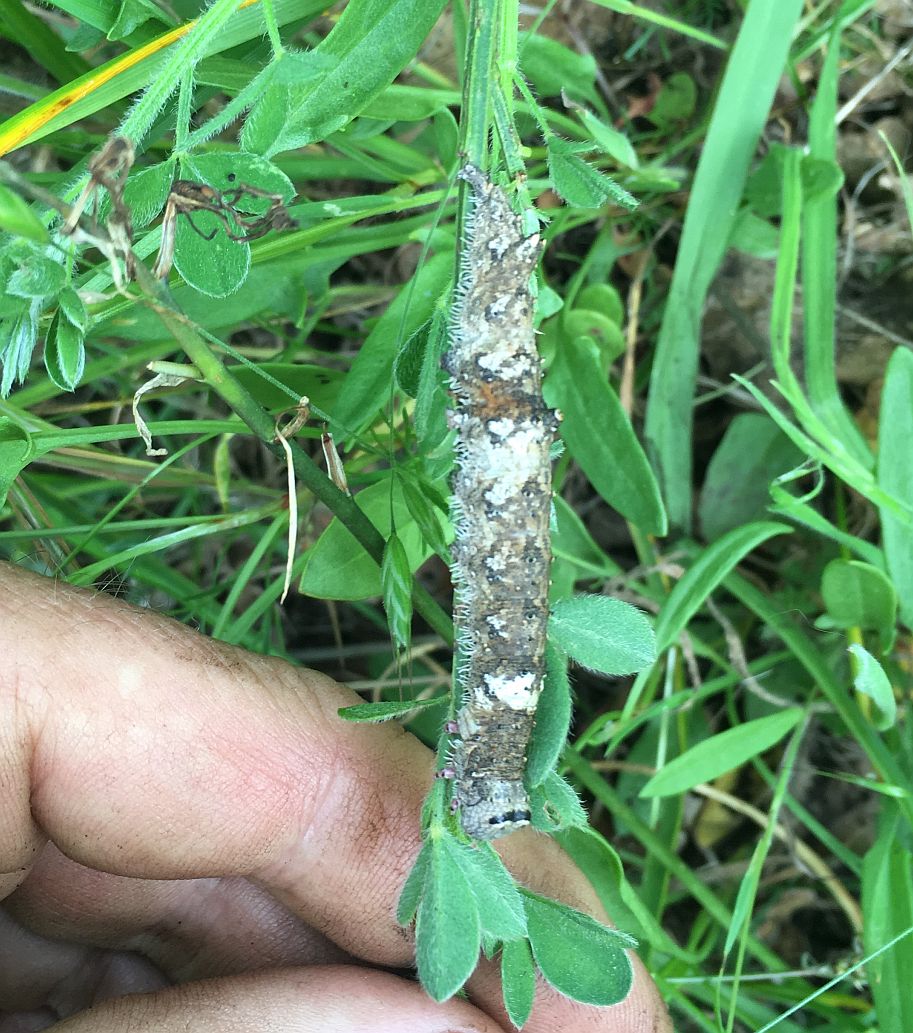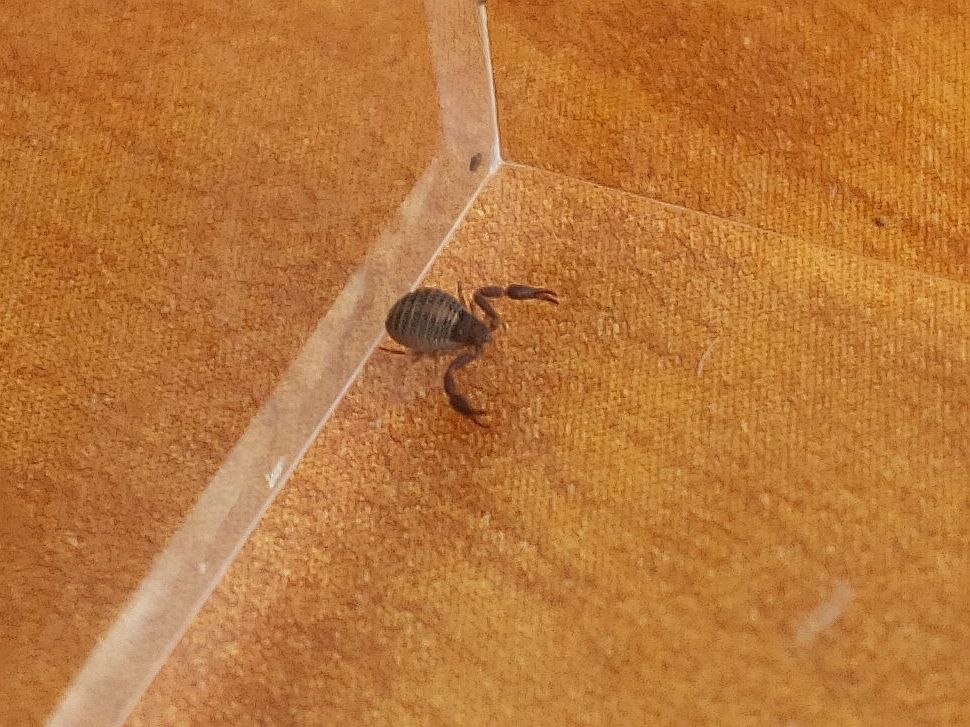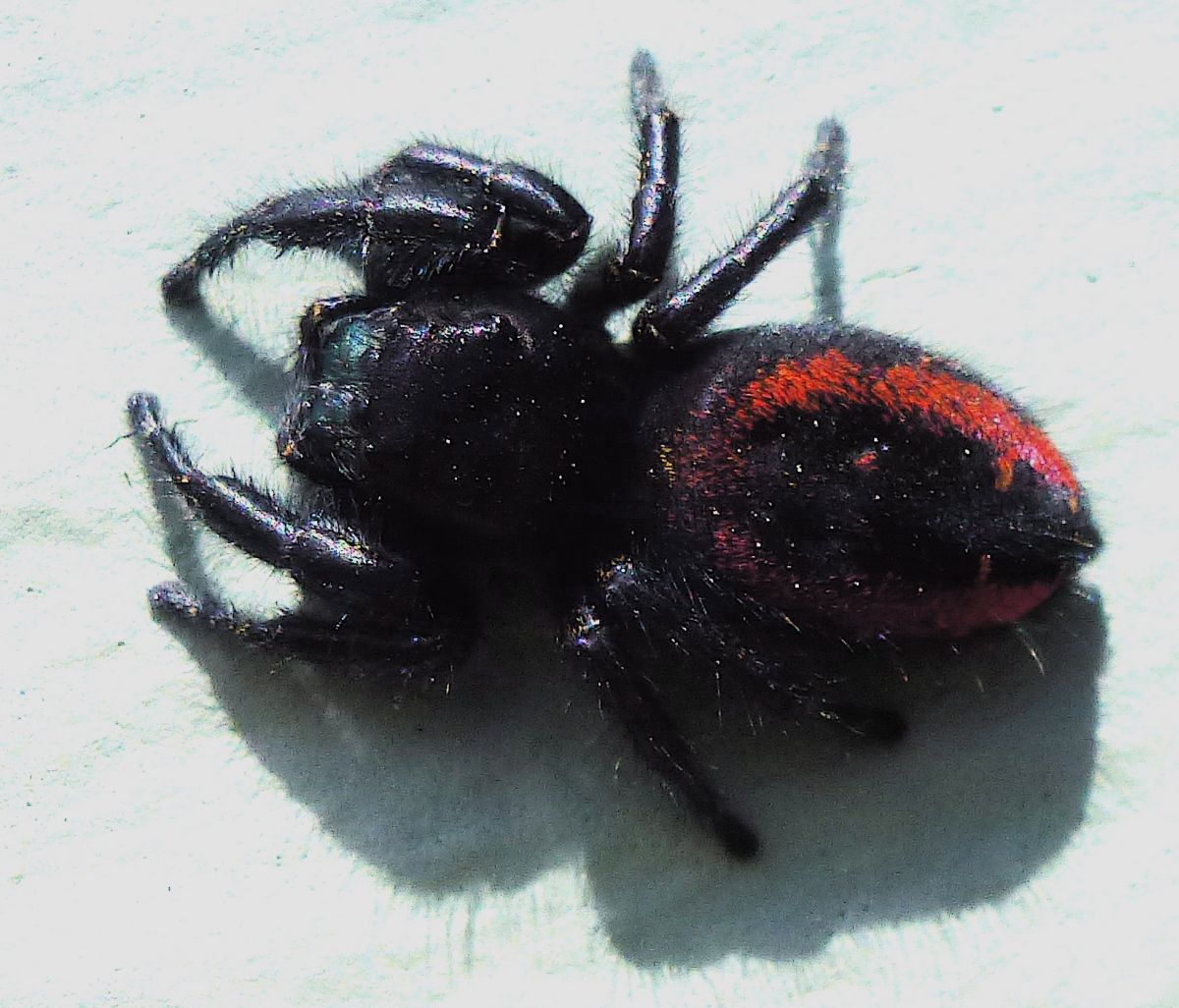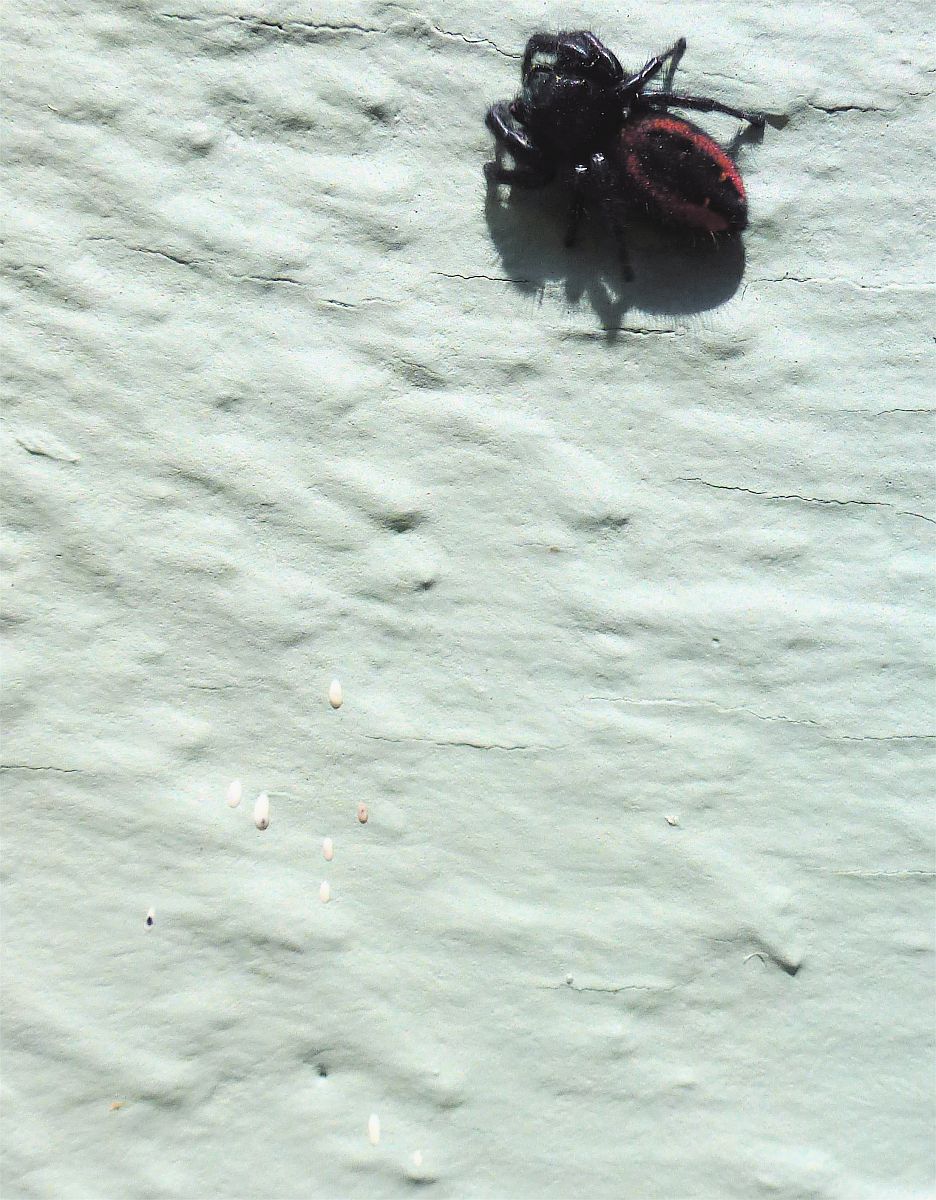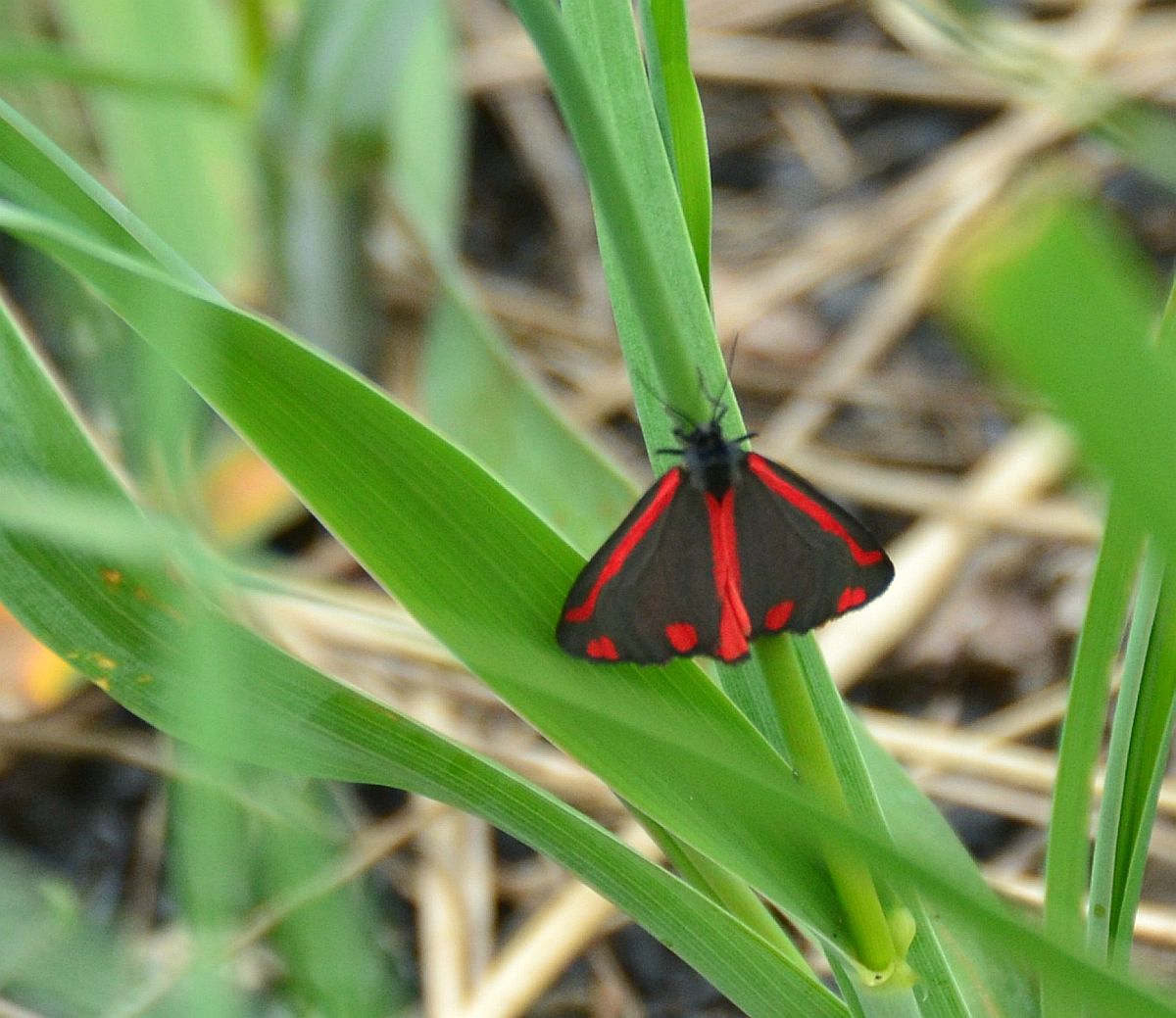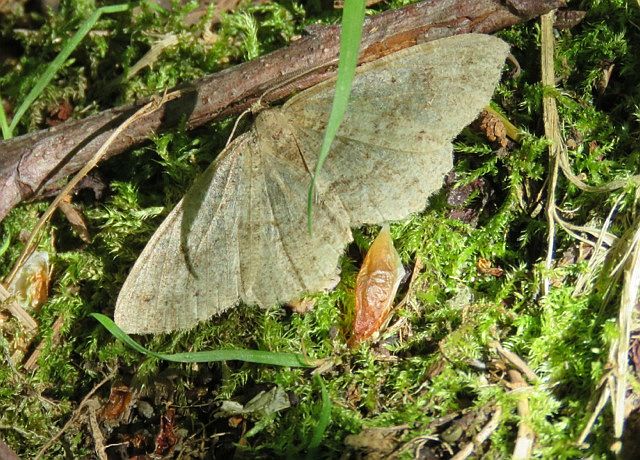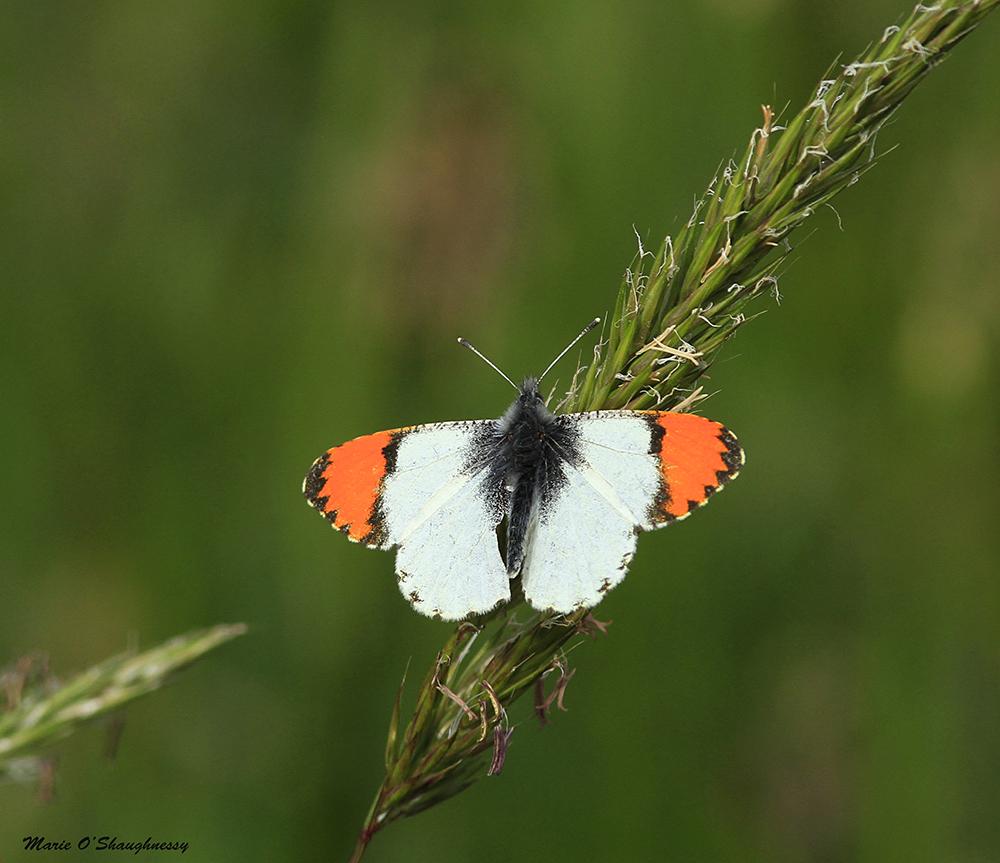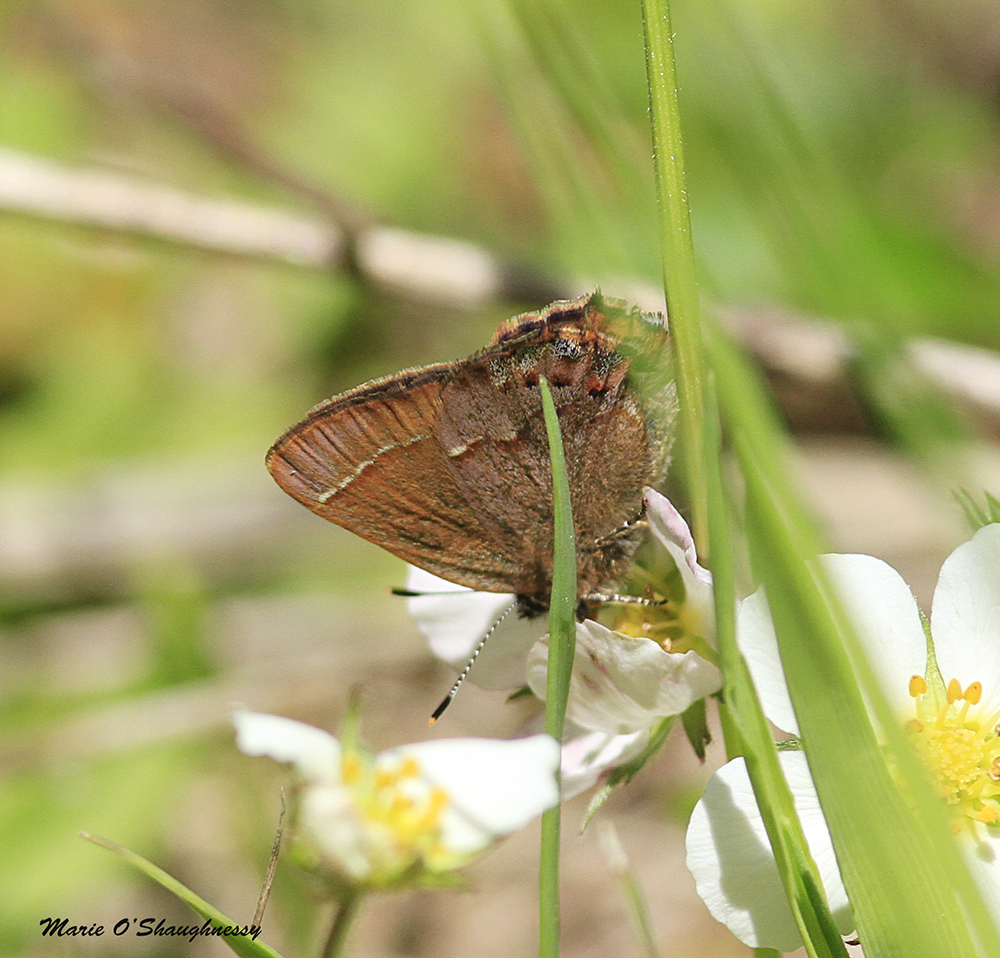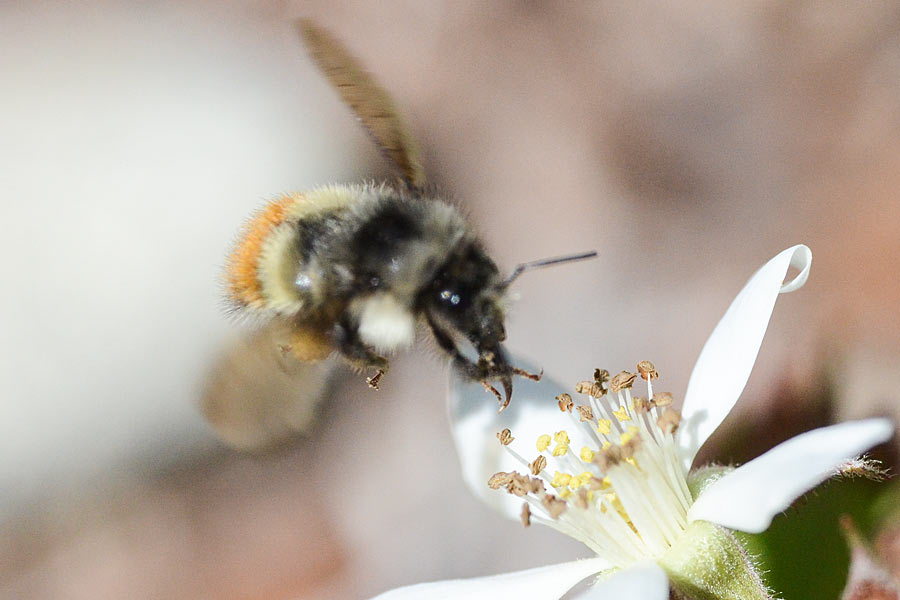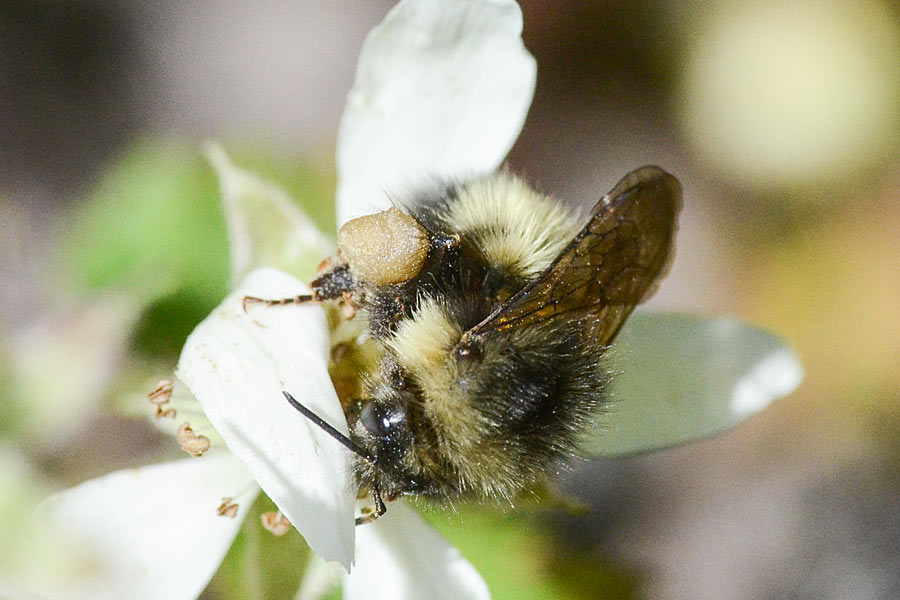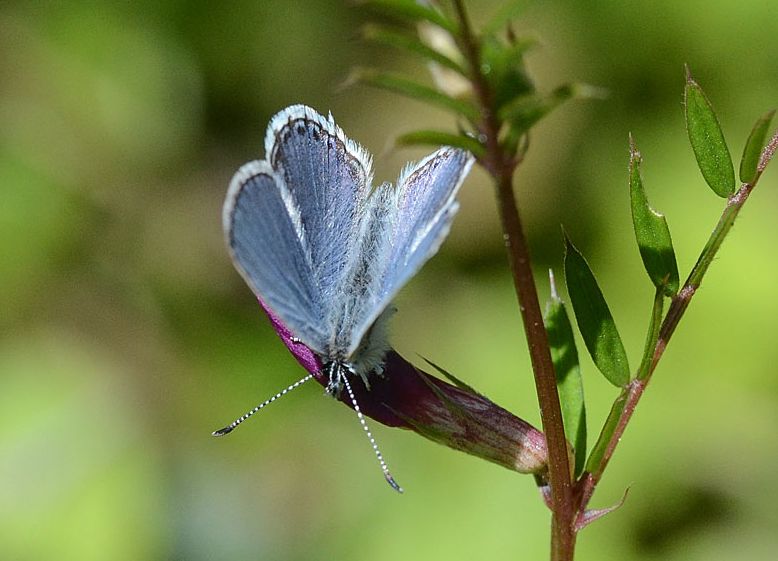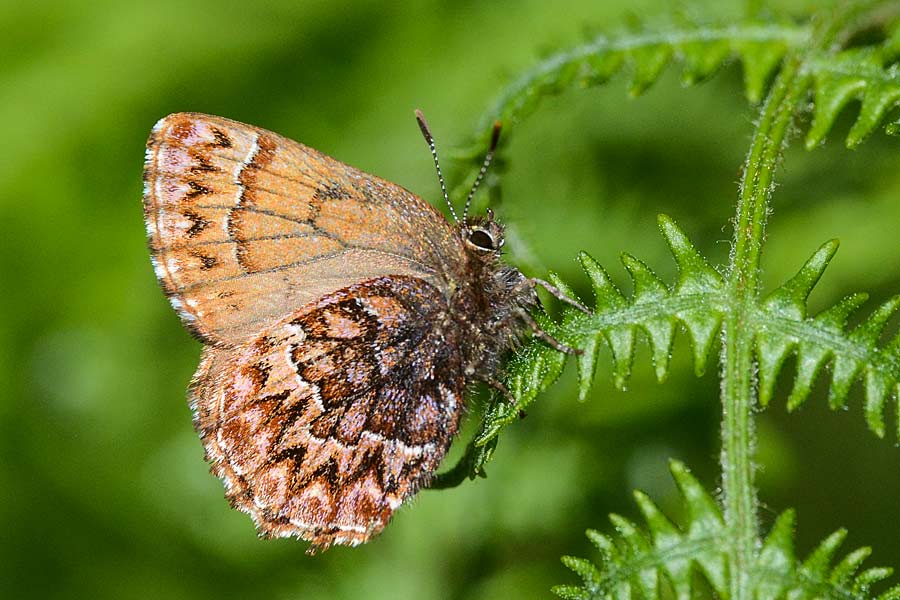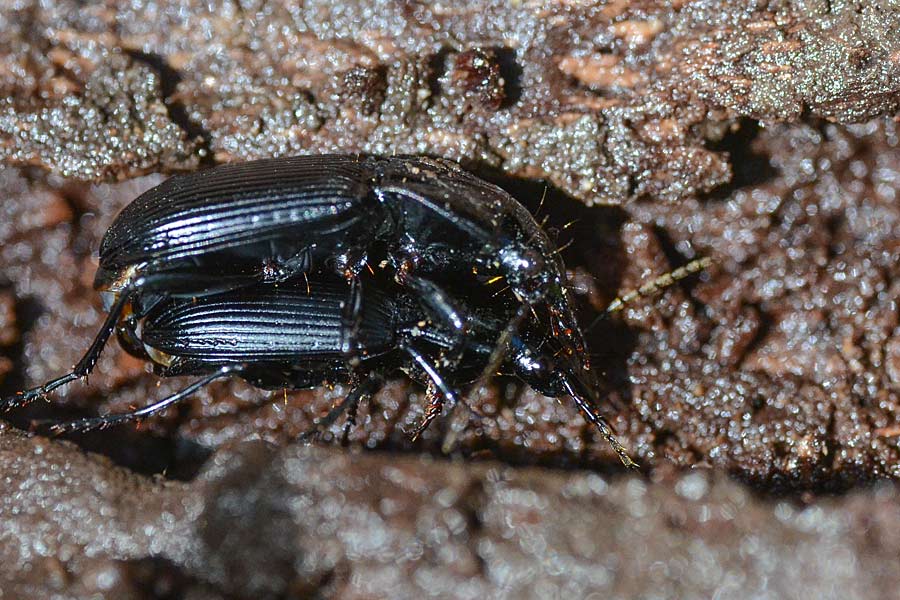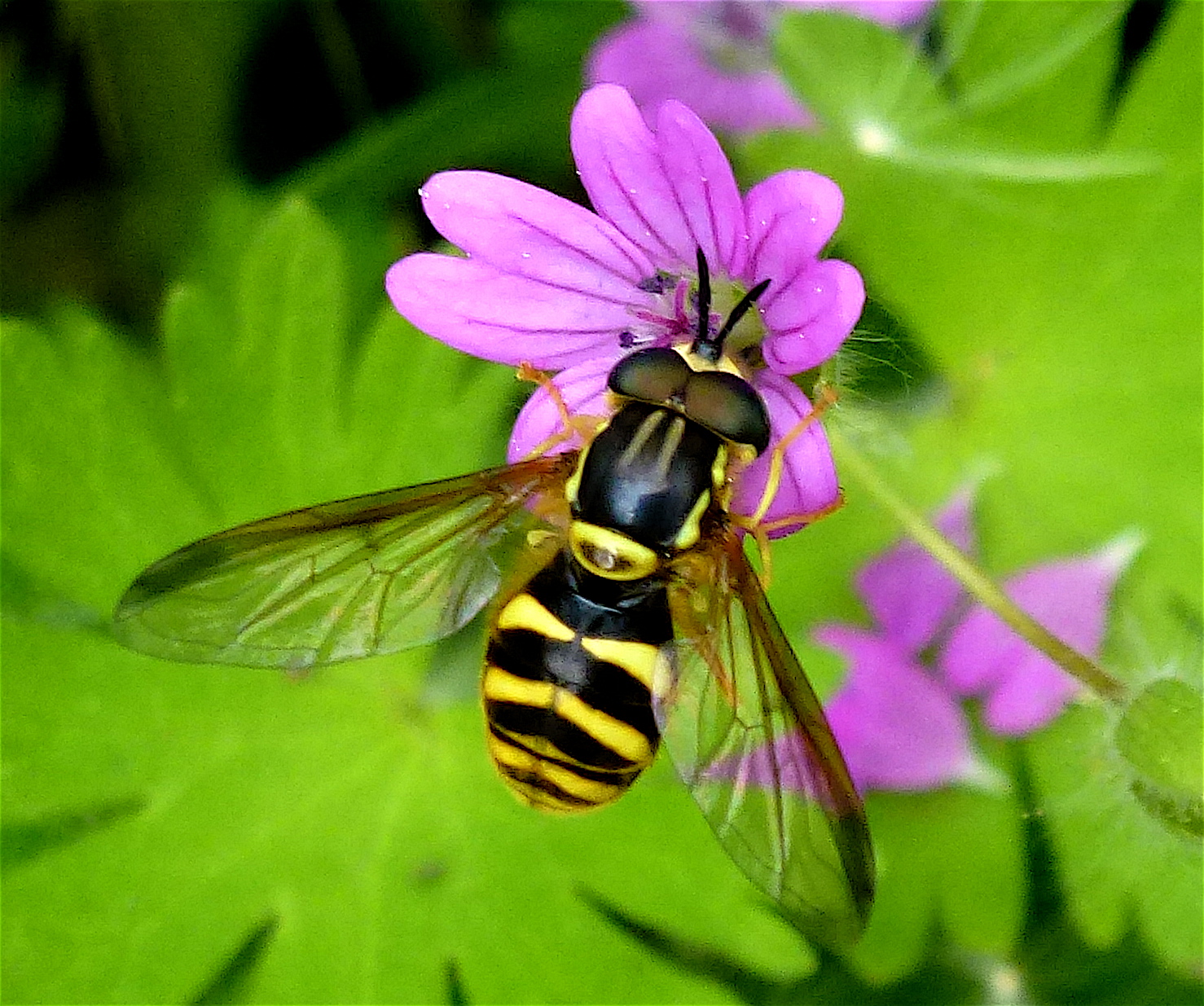2017 May 26
The present unaccustomed warm and sunny weather is producing lots of fine photos of invertebrates.
Here is another photo of a young Dot-tailed Whiteface by Gordon Hart.
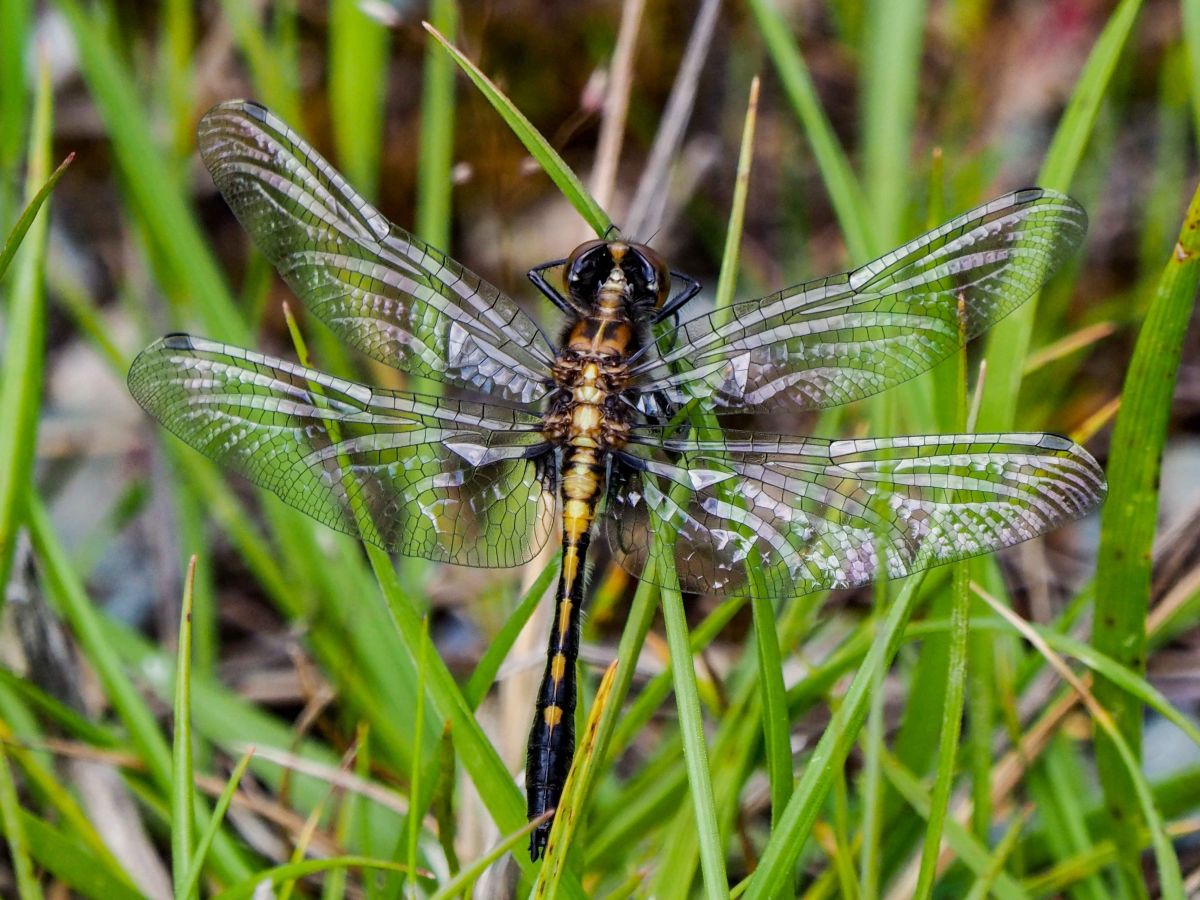
 Dot-tailed Whiteface Leucorrhinia intacta (Odo.: Libellulidae) Gordon Hart
Dot-tailed Whiteface Leucorrhinia intacta (Odo.: Libellulidae) Gordon Hart
Mike Yip writes from Nanoose Bay: Butterfly activity was definitely up yesterday (May 25). I was working in the garden when a dark brown medium-small butterfly fluttered in and landed on a rhubarb leaf. I was close enough to see that it was a Propertius Duskywing. Of course, it was gone by the time I got my camera, but it was replaced by a light brown butterfly that landed on a raspberry leaf. It turned out to be a Cedar Hairstreak which allowed one quick photo before darting away. A few minutes later a one-tailed Pale Tiger Swallowtail flew in and started nectaring on the lilacs. Meanwhile Cabbage Whites and Western Spring Azures were common. With all that activity I decided to check Cross Road, which was only 2 km away. As expected the Western Tailed Blues and Western Brown Elfins were at the beginning of the trail and the lone Western Pine Elfin was on the same fern waiting for a mate. The only new butterflies were two first-of-year Grey Hairstreaks.
Mike’s tiger swallowtail below is of interest. It looks rather too yellow and not white enough for a Pale Tiger Swallowtail, but the width of the black bands and the orange crescent near the tail point to a Pale Tiger rather than to a Western Tiger. While most of our tiger swallowtails are relatively easily told apart, occasionally we get one that can be puzzling. We’re going to label this one Pale!
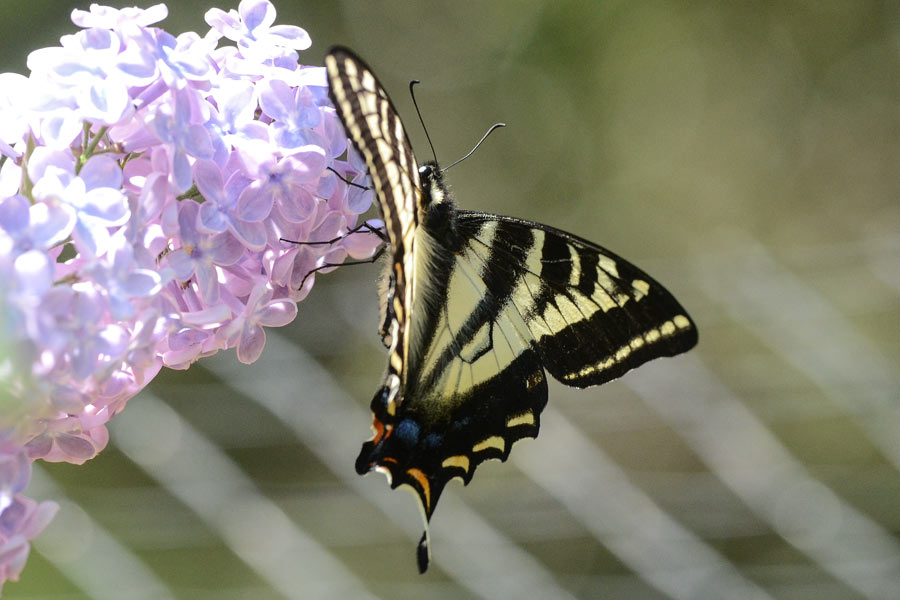
 Pale Tiger Swallowtail Papilio eurymedon (Lep.: Papilionidae) Mike Yip
Pale Tiger Swallowtail Papilio eurymedon (Lep.: Papilionidae) Mike Yip
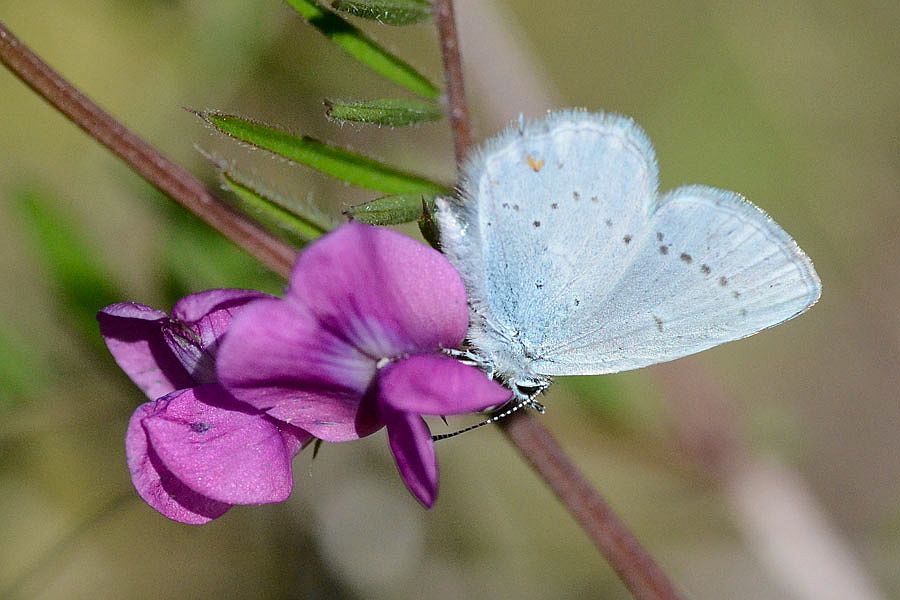
 Western Tailed Blue Everes amyntula (Lep.: Lycaenidae) Mike Yip
Western Tailed Blue Everes amyntula (Lep.: Lycaenidae) Mike Yip
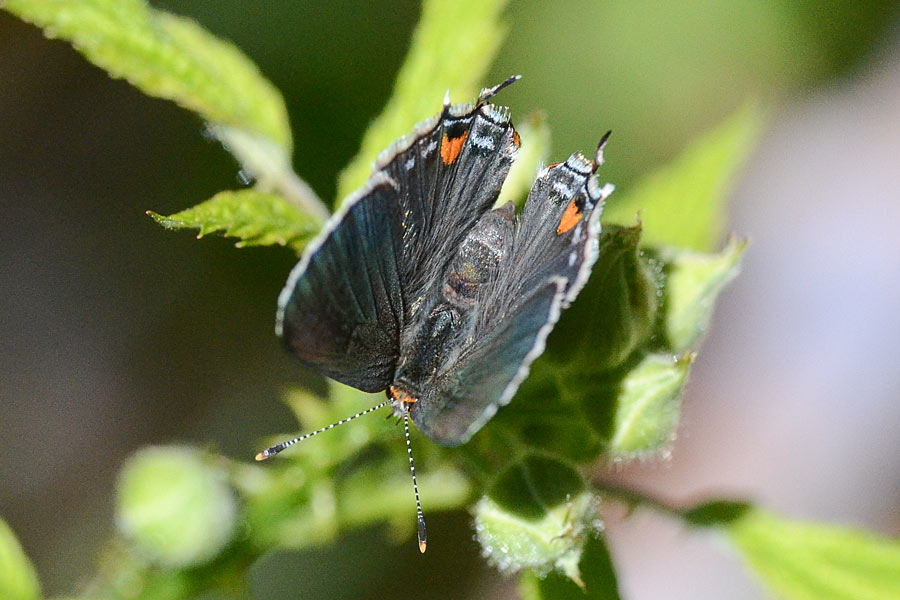

Grey Hairstreak Strymon melinus (Lep.: Lycaenidae) Mike Yip

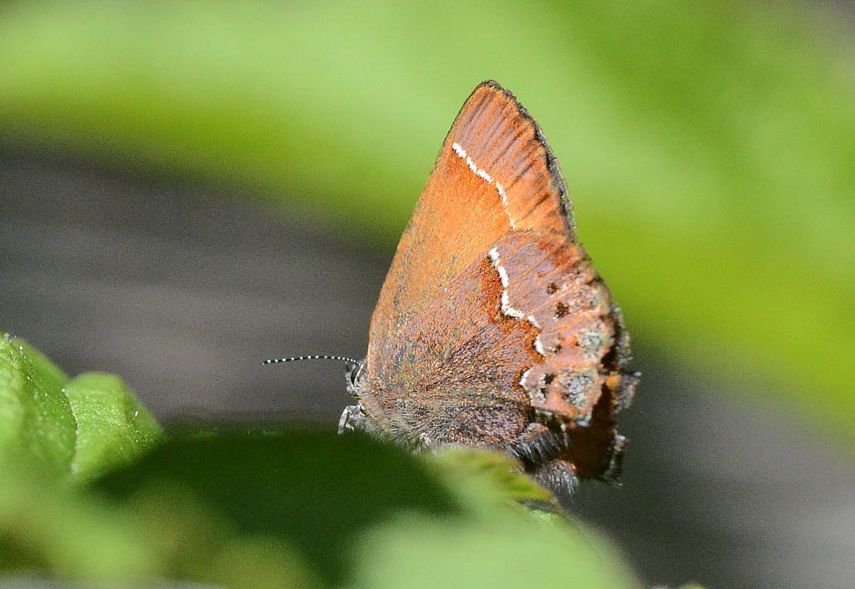
Cedar Hairstreak Mitoura rosneri (Lep.: Lycaenidae) Mike Yip

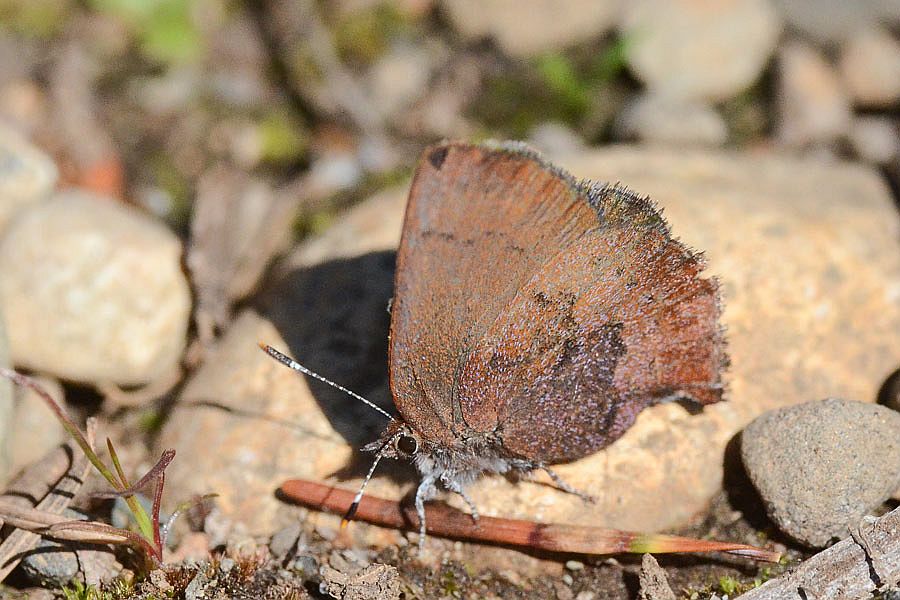
Western Brown Elfin Incisalia iroides (Lep.: Lycaenidae) Mike Yip
Thank you, Sean McCann for identifying the cuckoo bee below.

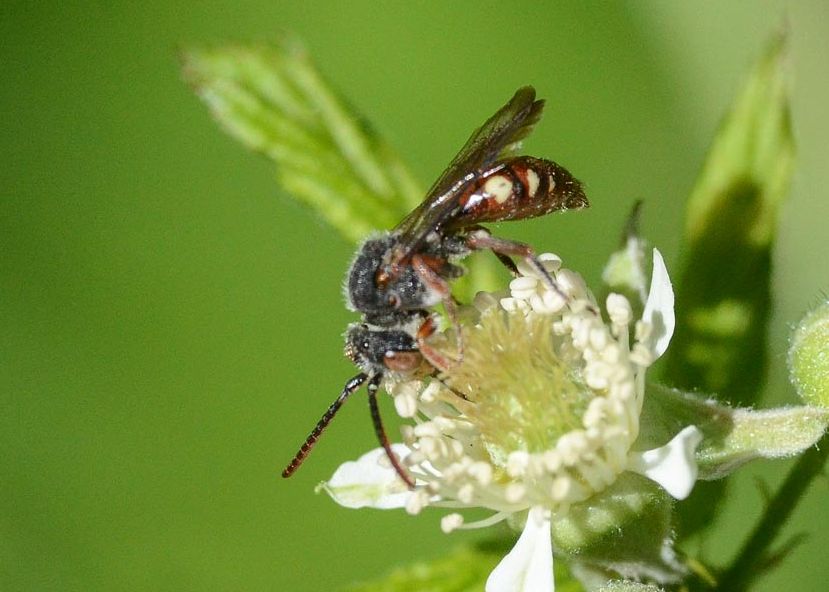
Cuckoo bee Nomada sp.(Hym.: Apidae – Nomadinae) Mike Yip
Daniel Dönnecke writes: While on Hornby Island this last weekend I noticed that there were butterflies out which frequently distracted me from bird watching. There was a swallowtail, many duskywings, an anglewing (comma) and this Western Pine Elfin.
Also while mowing my lawn this afternoon I flushed a small butterfly from a young Sitka Spruce. It landed again and I got a picture of it. [Jeremy Tatum writes: This one is a little past its sell-by date. I am torn between Western Brown Elfin and Cedar Hairstreak. I would be interested in opinions (with reasons!)]
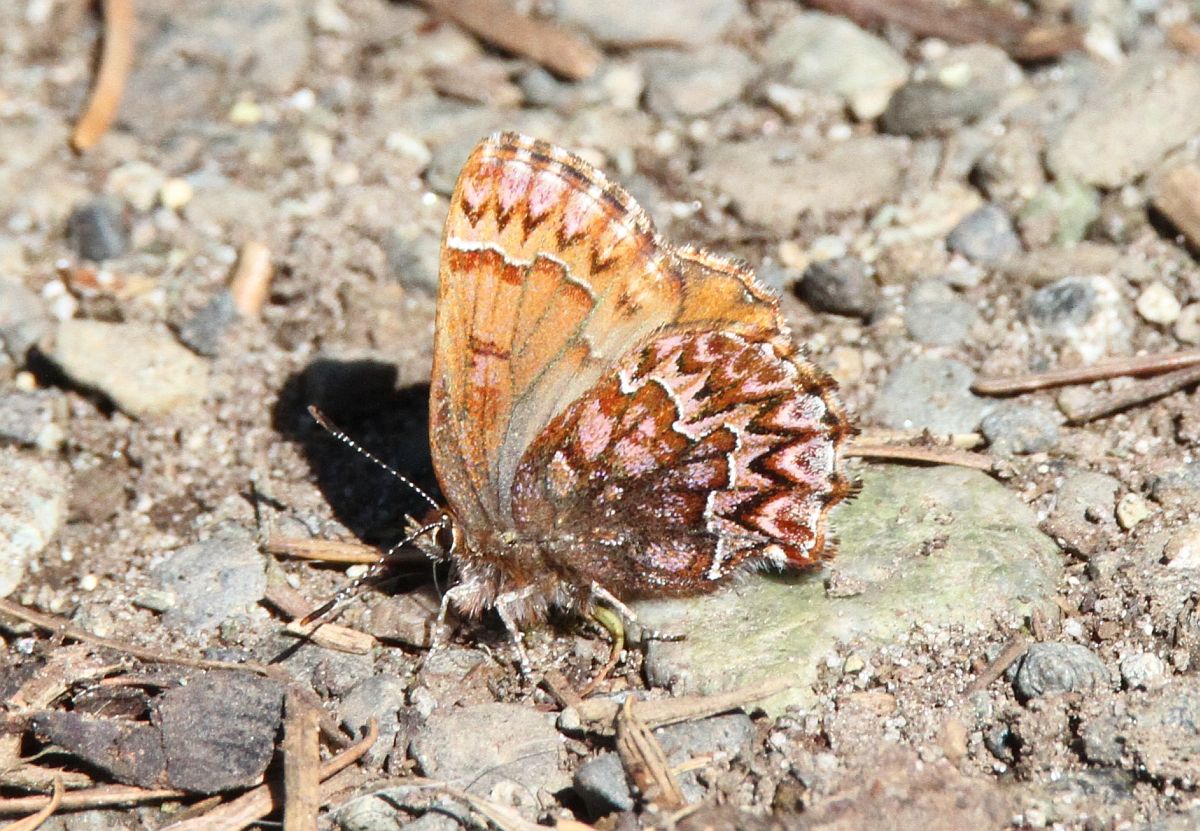
 Western Pine Elfin Incisalia eryphon (Lep.: Lycaenidae) Daniel Dönnecke
Western Pine Elfin Incisalia eryphon (Lep.: Lycaenidae) Daniel Dönnecke

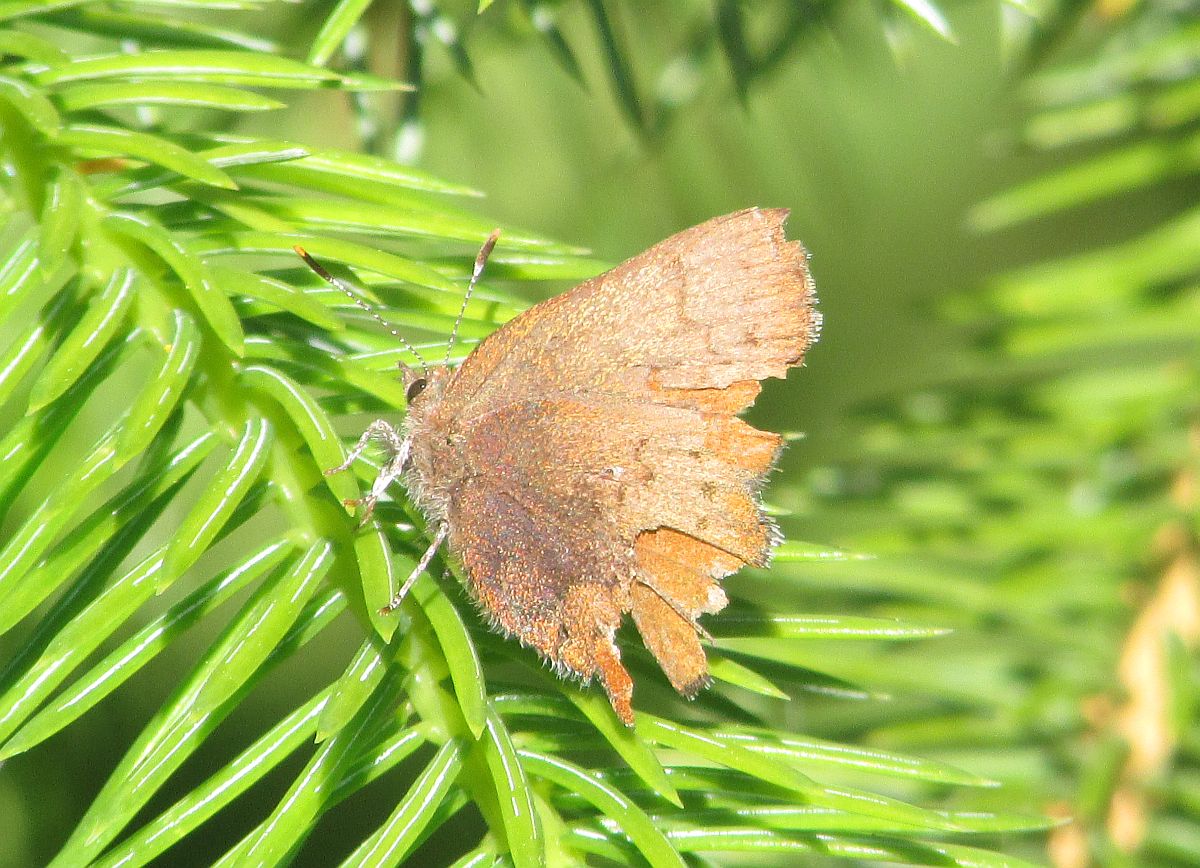
Western Brown Elfin? Cedar Hairstreak? Opinions, anyone?
Daniel Dönnecke
Two more from Daniel. Commas are notoriously difficult to identify from upperside alone, but Jeremy Tatum thinks this one is most likely a Green Comma. Opinions welcome.
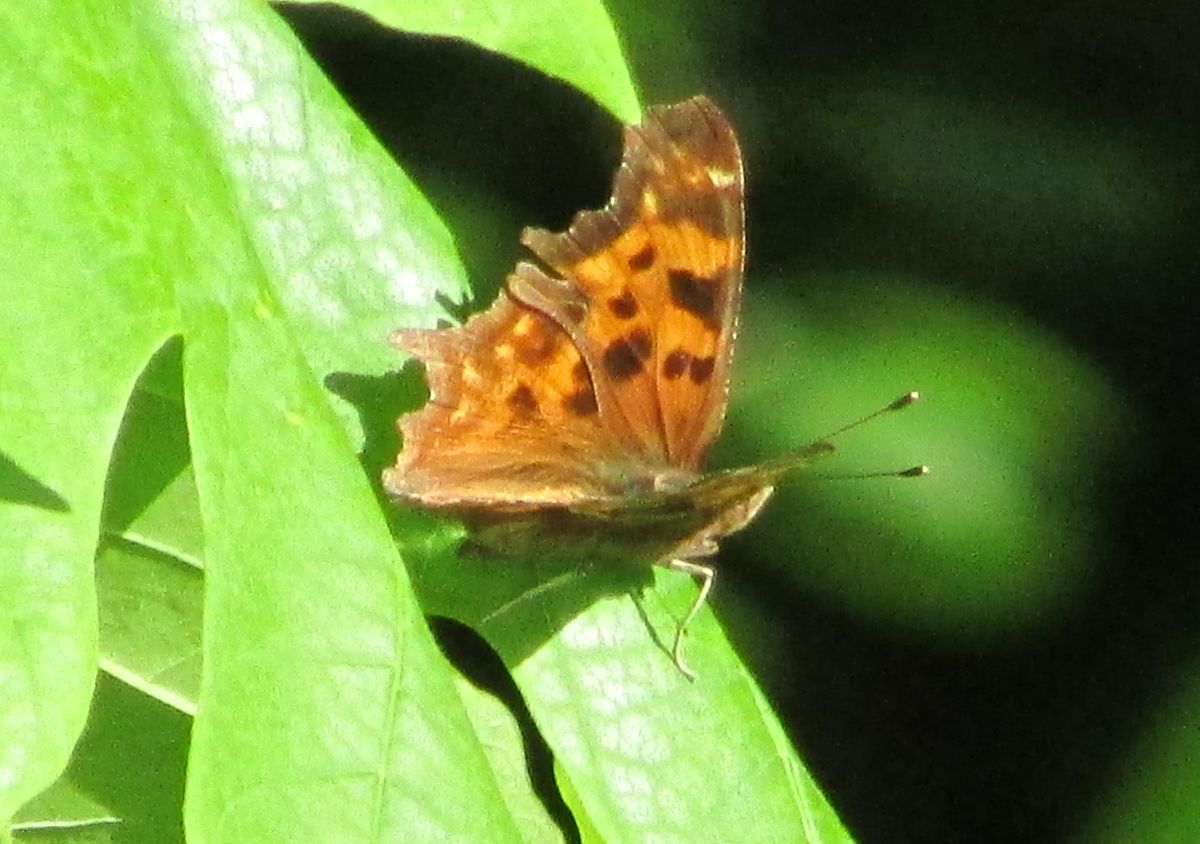
Probably Green Comma Polygonia faunus (Lep.: Nymphalidae) Daniel Dönnecke

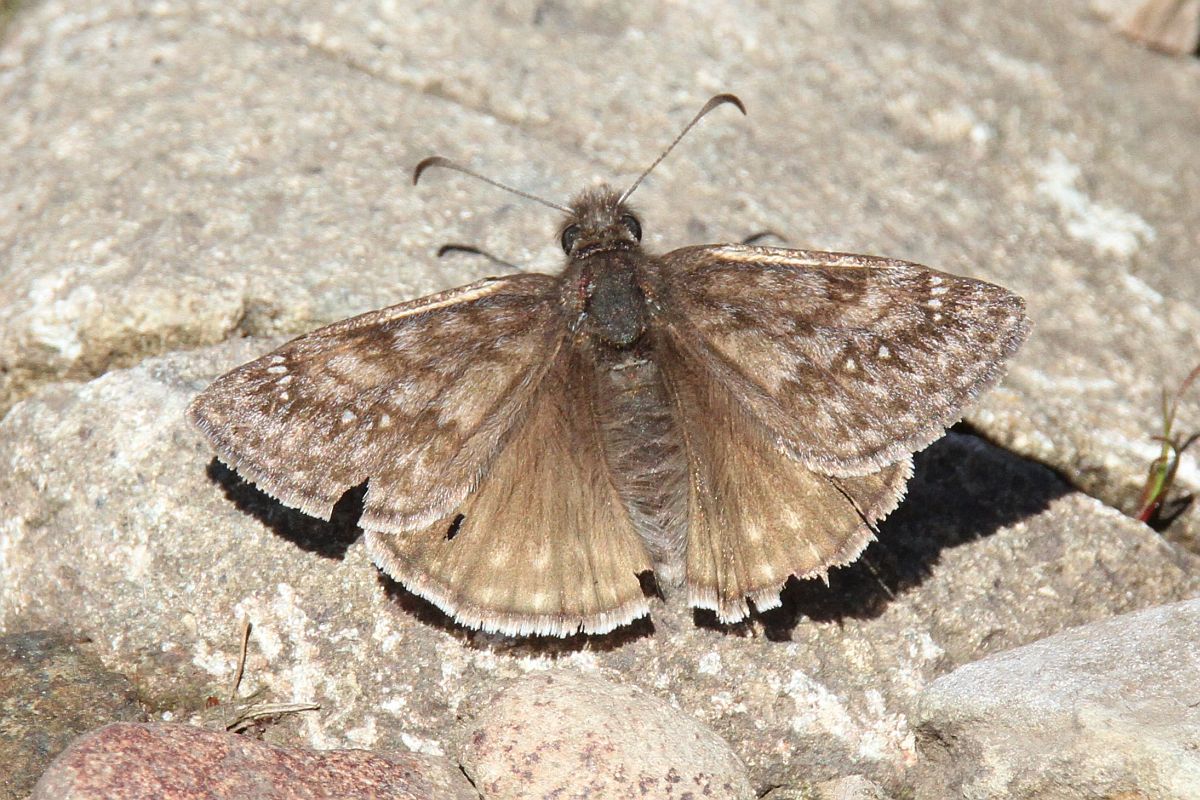
Propertius Duskywing Erynnis propertius (Lep.: Hesperiidae) Daniel Dönnecke
Some spider photographs by Dar Churcher from Colwood. Not sure what the spiderlings are on the first photograph. They are most likely Araneus diadematus, but they could be another species.
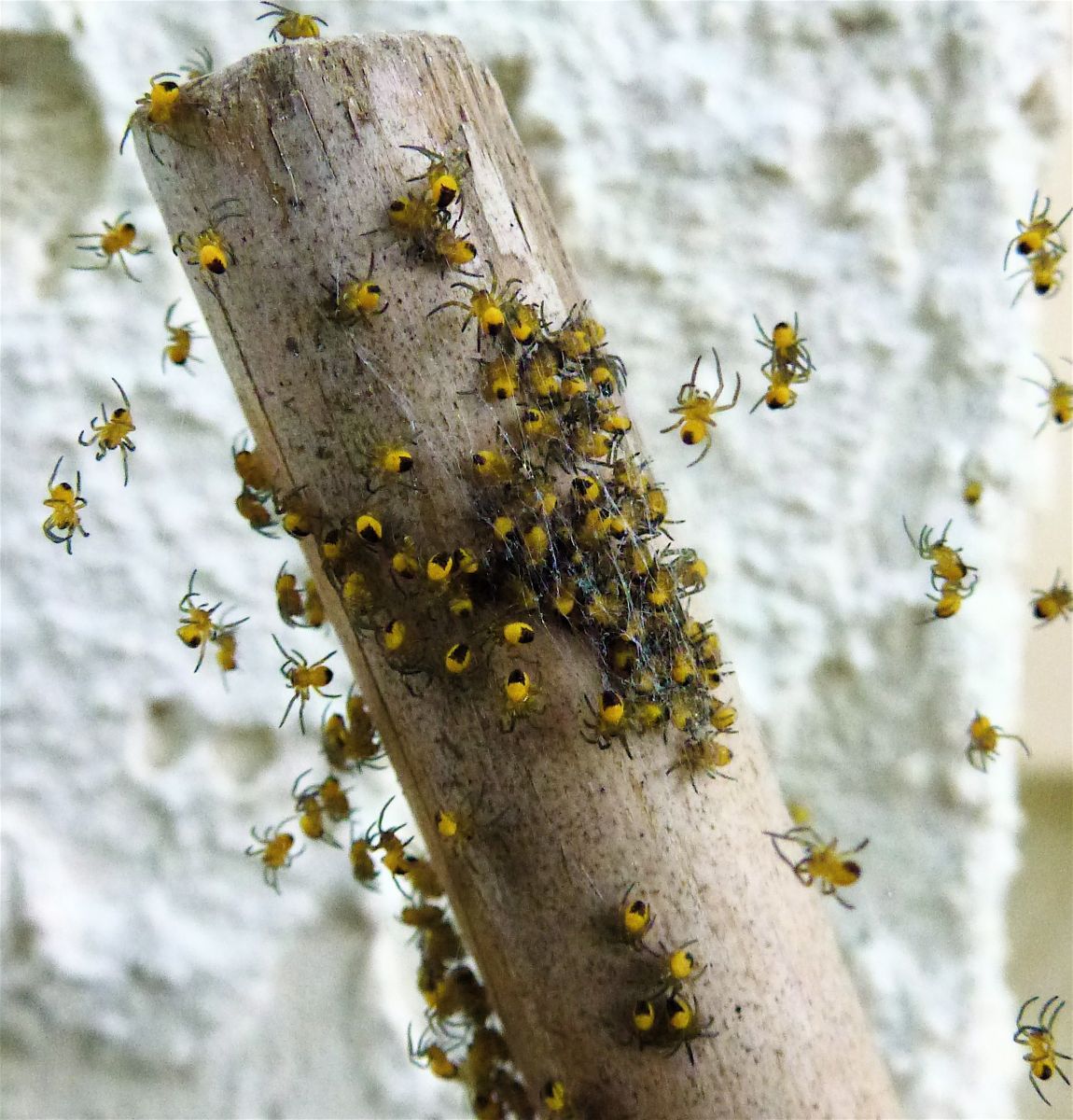
 Probably Araneus diadematus (Ara.: Araneidae) Dar Churcher
Probably Araneus diadematus (Ara.: Araneidae) Dar Churcher
The following were identified by Sean McCann.
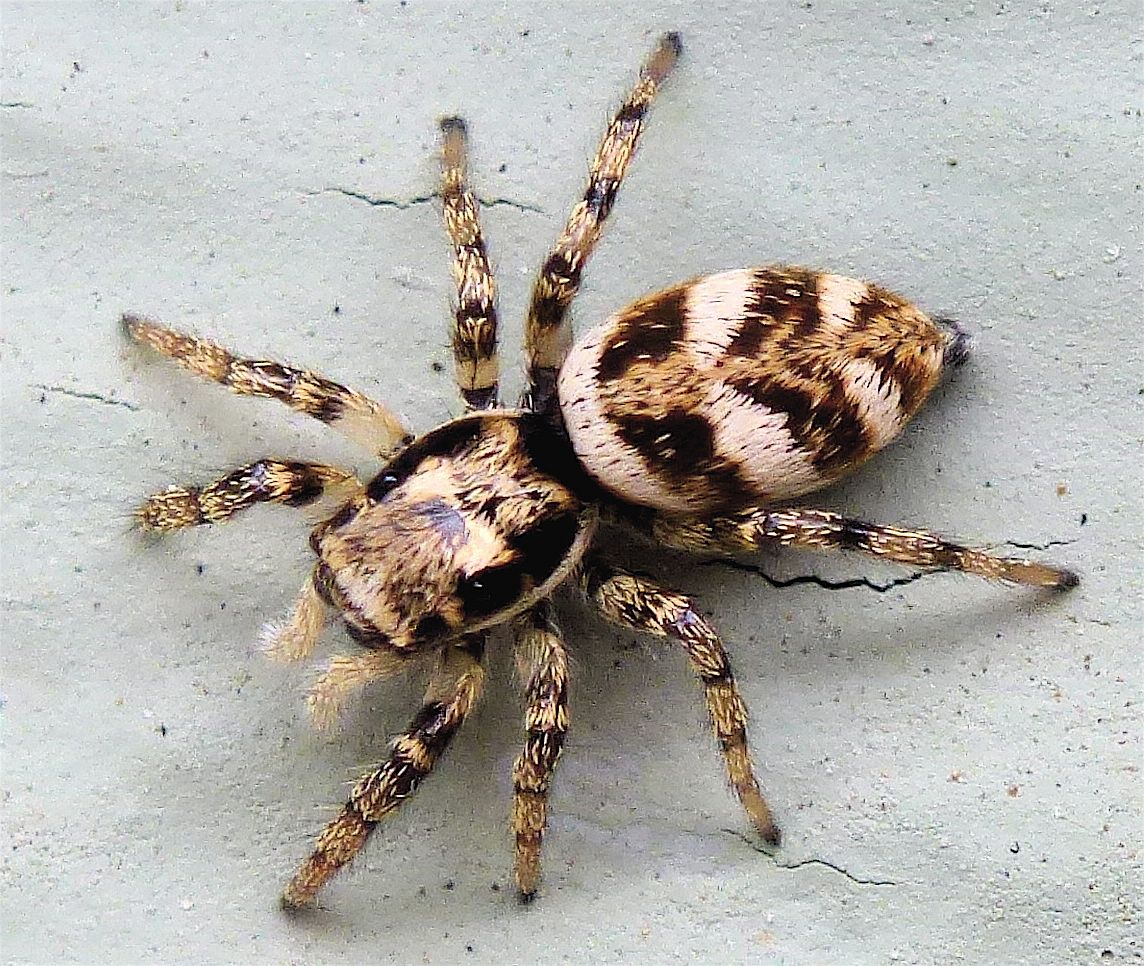
 Salticus scenicus (Ara.: Salticidae) Dar Churcher
Salticus scenicus (Ara.: Salticidae) Dar Churcher

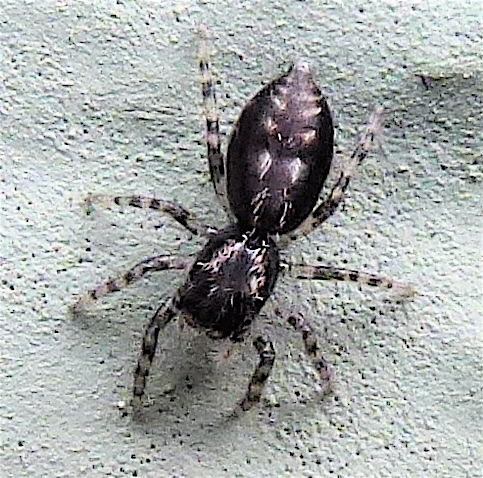
Platycryptus californicus (Ara.: Salticidae)
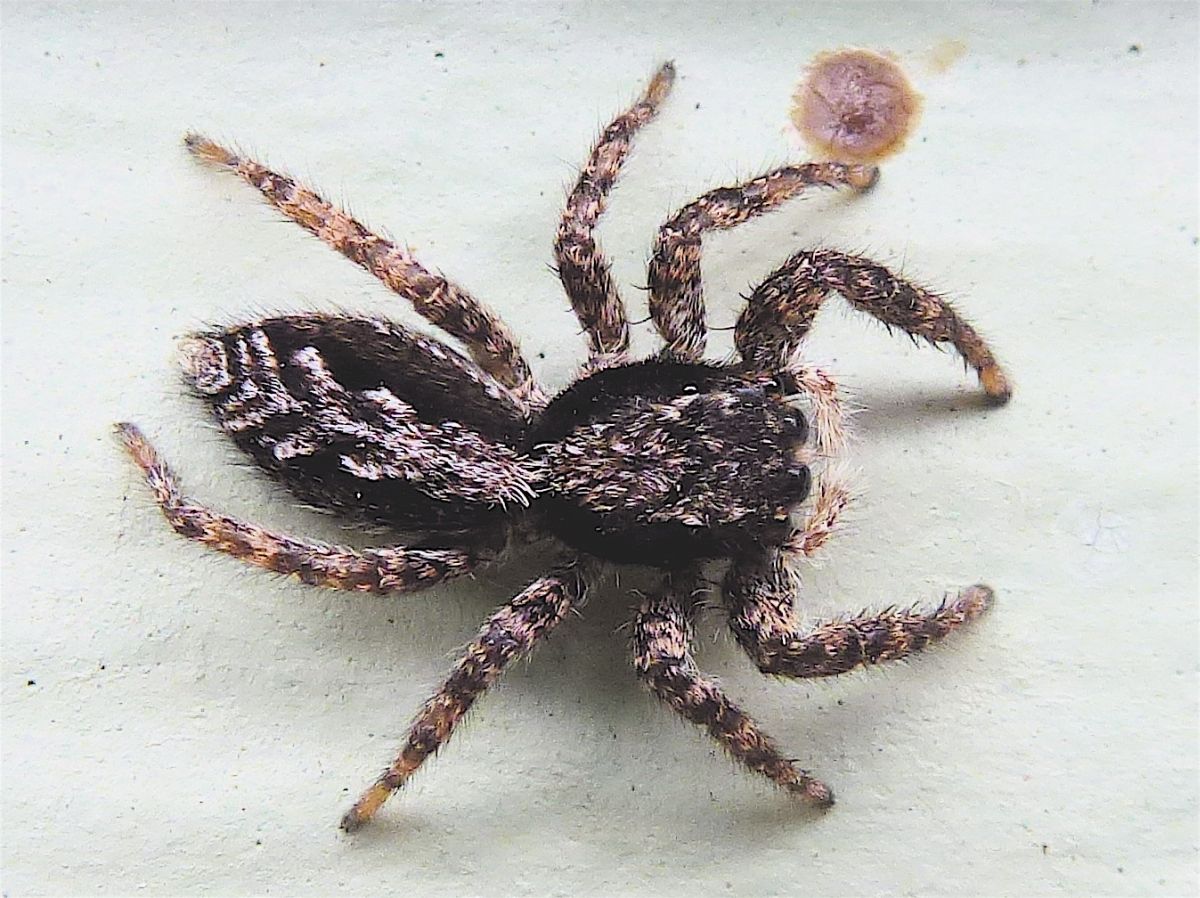
 Platycryptus californicus (Ara.: Salticidae) Dar Churcher
Platycryptus californicus (Ara.: Salticidae) Dar Churcher
Samantha Hatfield sends a photograph of an Anise Swallowtail in the act of ovipositing on some Fennel at Shelbourne and Haultain Streets.
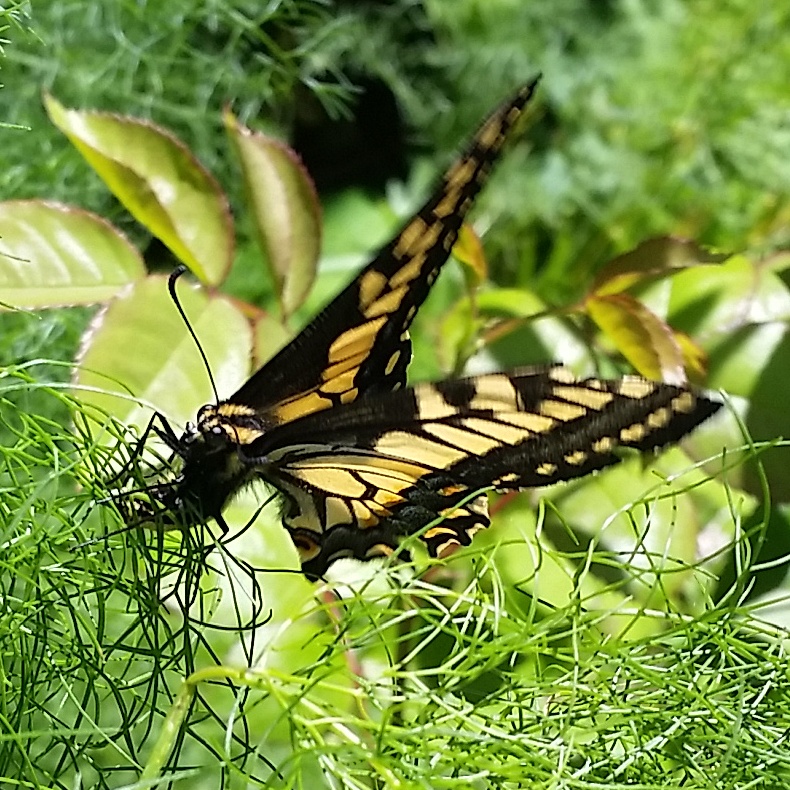
 Anise Swallowtail Papilio zelicaon (Lep.: Papilionidae)
Anise Swallowtail Papilio zelicaon (Lep.: Papilionidae)
Jeremy Tatum writes: The micro below is probably the same species as the micro shown on May 16. The caterpillars looked very similar, except that the May 16 one was found and reared on Snowberry, and today’s was found and reared on Stinging Nettle.
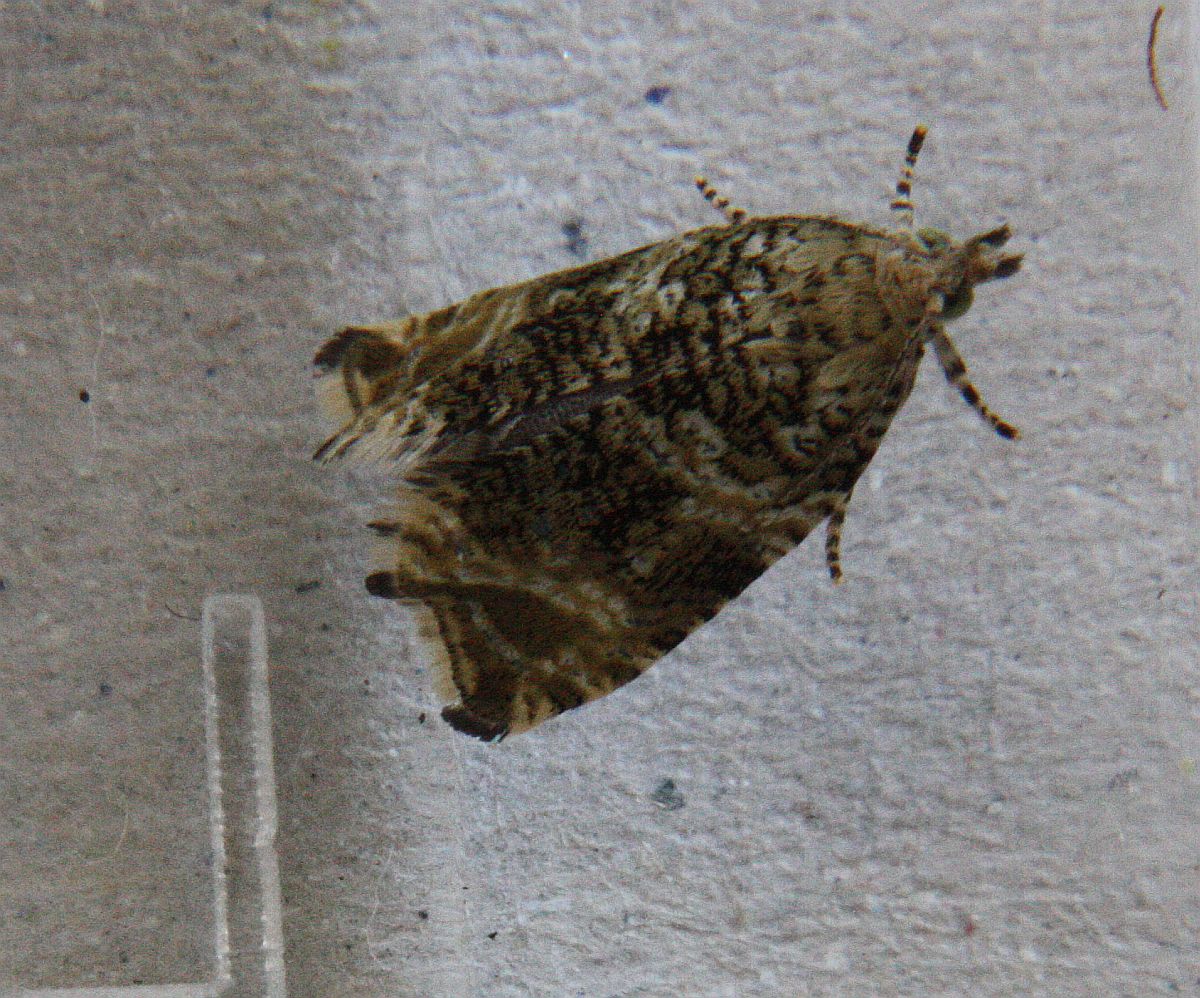
 Olethreutes glaciana (Lep.: Tortricidae) Jeremy Tatum
Olethreutes glaciana (Lep.: Tortricidae) Jeremy Tatum
Val George writes: Here is a photo of a Four-spotted Skimmer Libellula quadrimaculata taken yesterday, May 25, at the Pike Lake Substation off Munn Road. Also, today, May 26, I saw my first meadowhawk of the season, a Cardinal Meadowhawk Sympetrum illotum on Thetis Island whilst on a trip with the Cowichan Valley Naturalists.
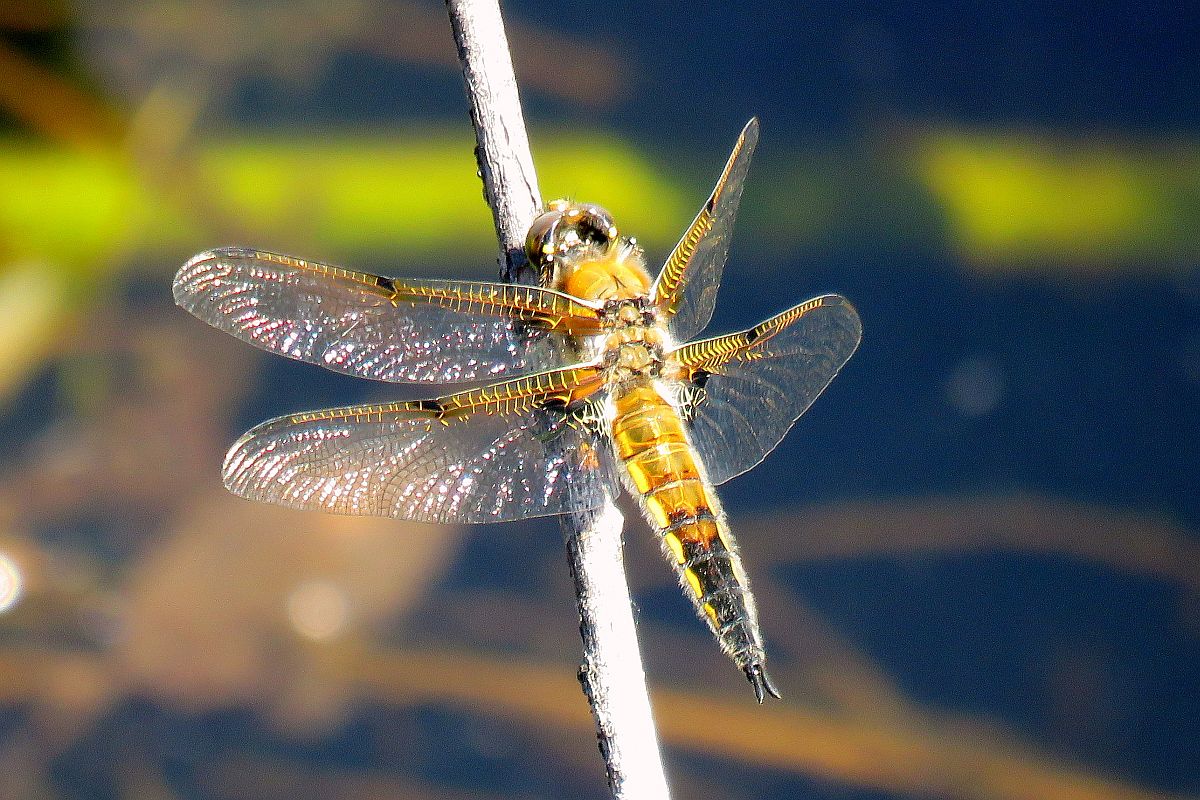
 Four-spotted Skimmer Libellula quadrimaculata (Odo.: Libellulidae) Val George
Four-spotted Skimmer Libellula quadrimaculata (Odo.: Libellulidae) Val George

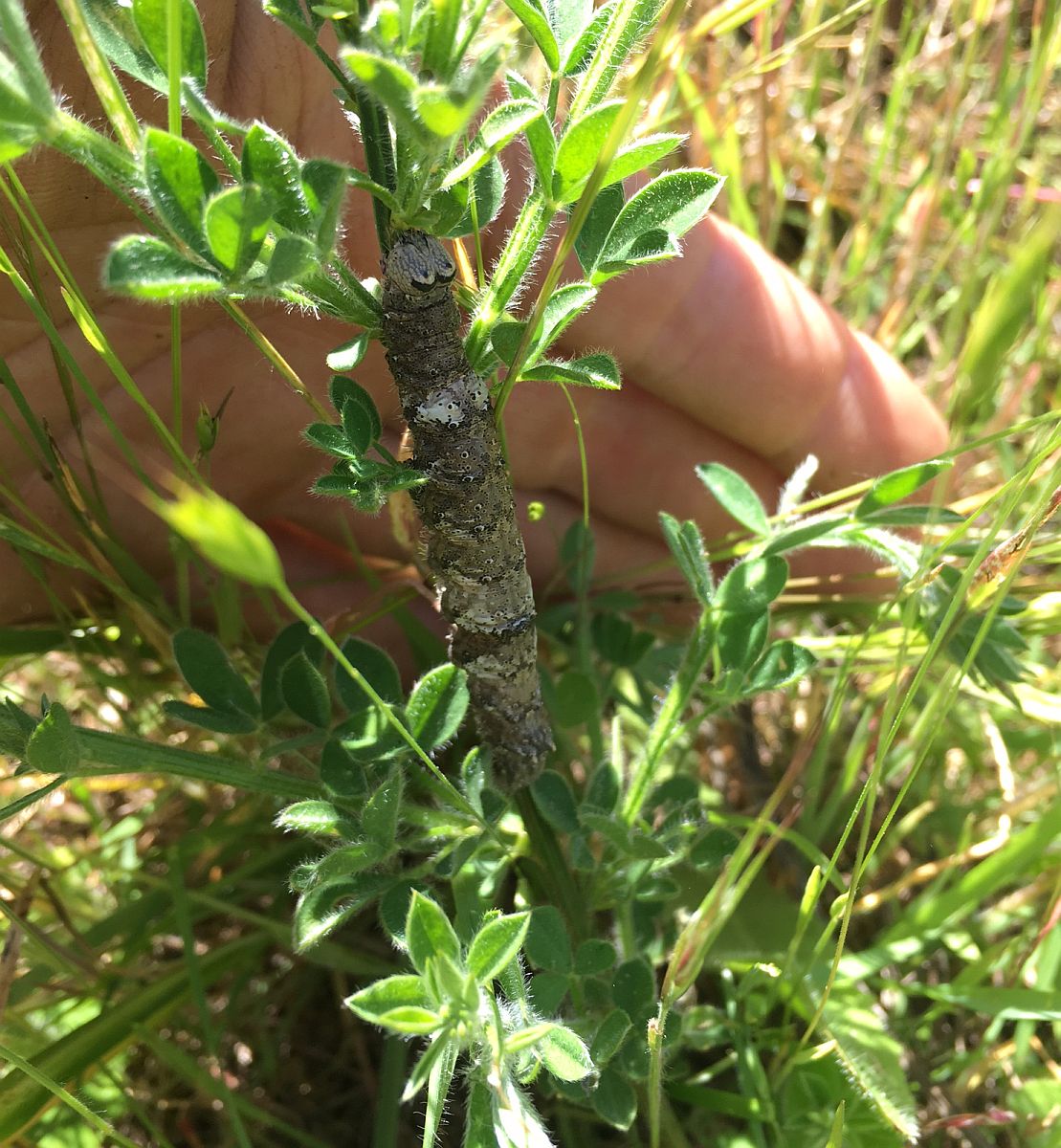
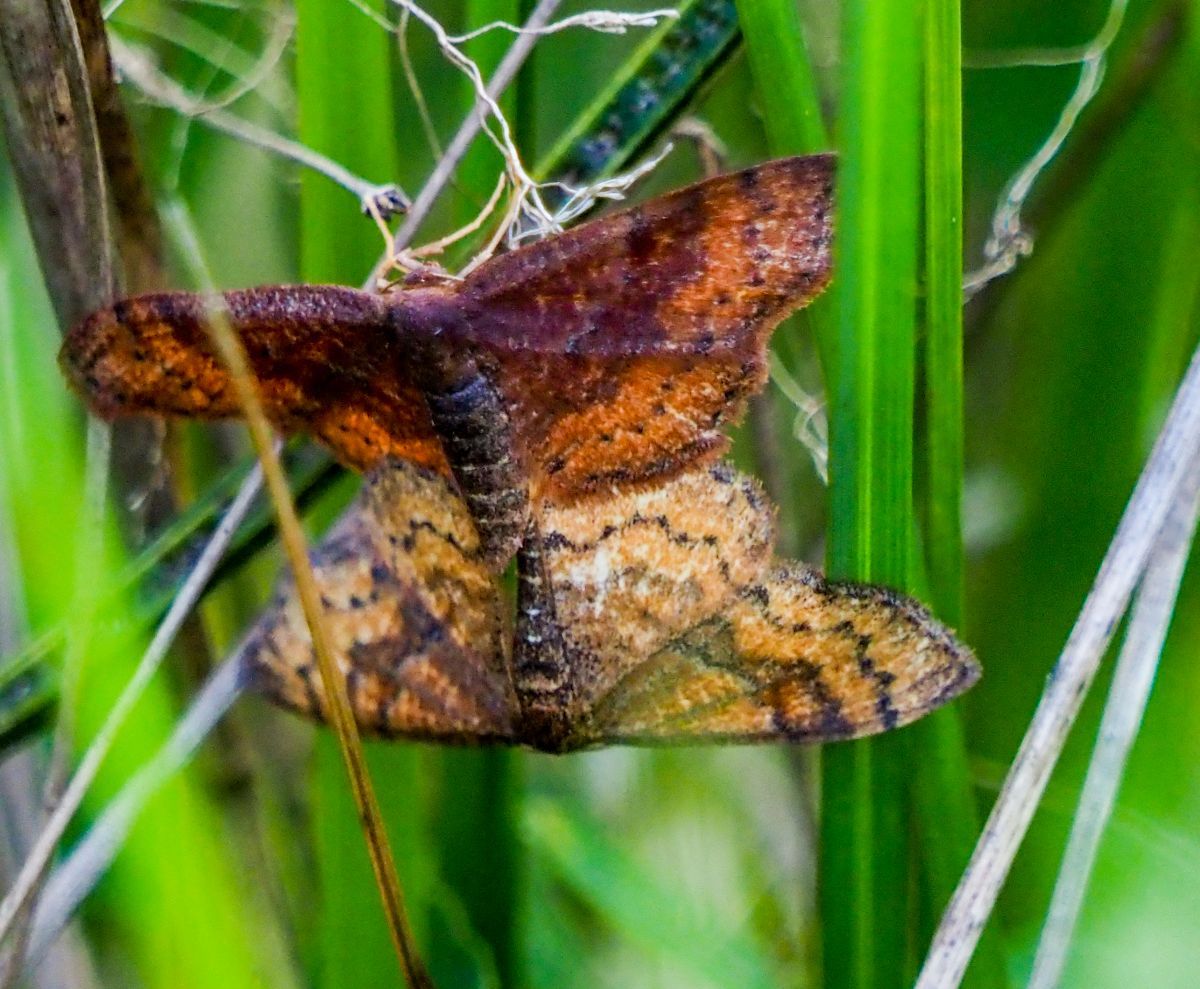
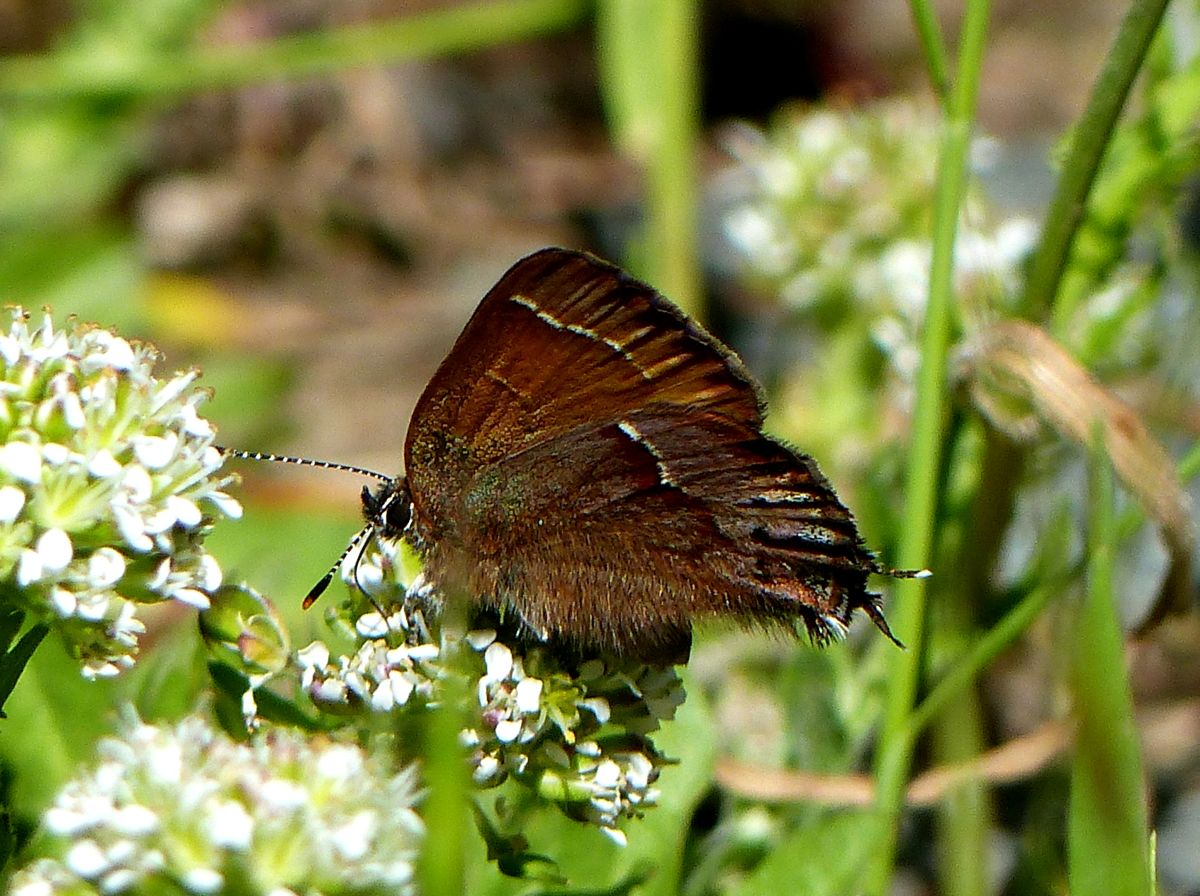
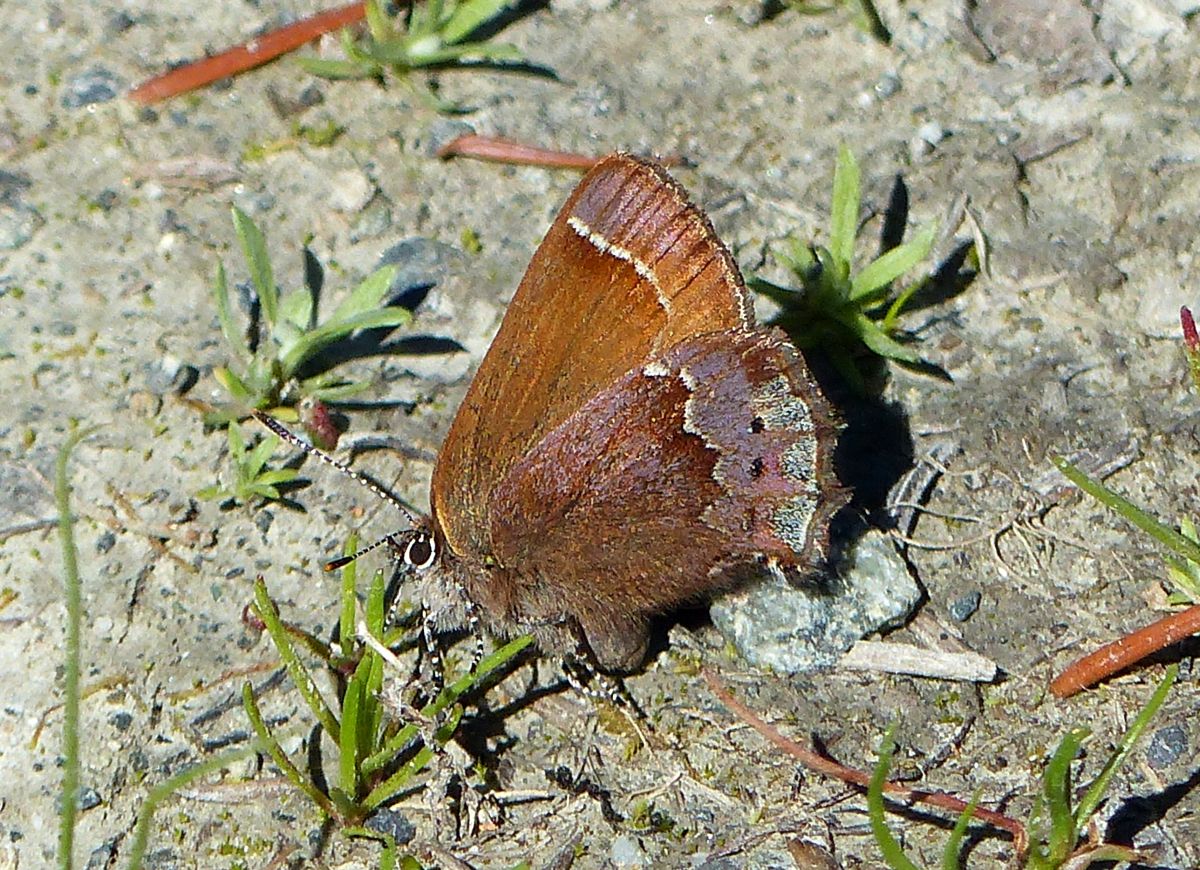
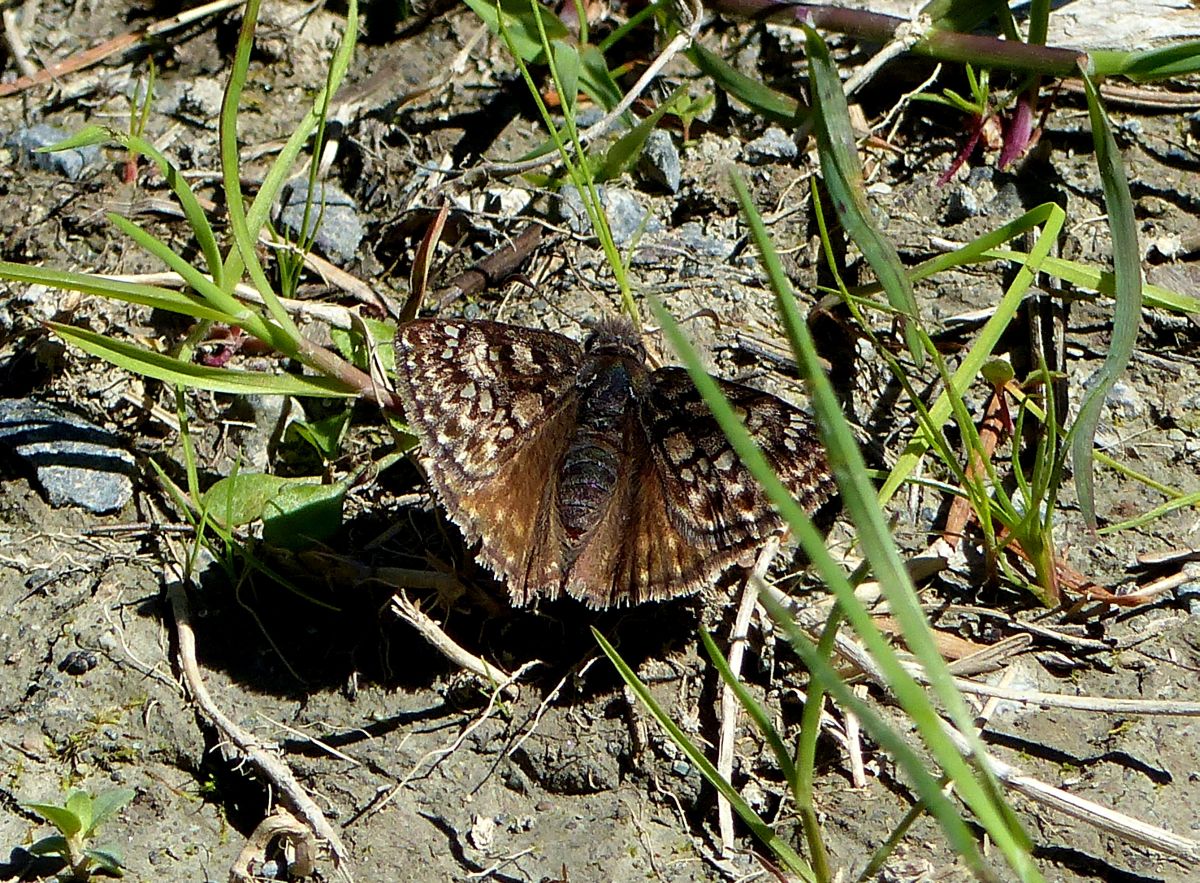
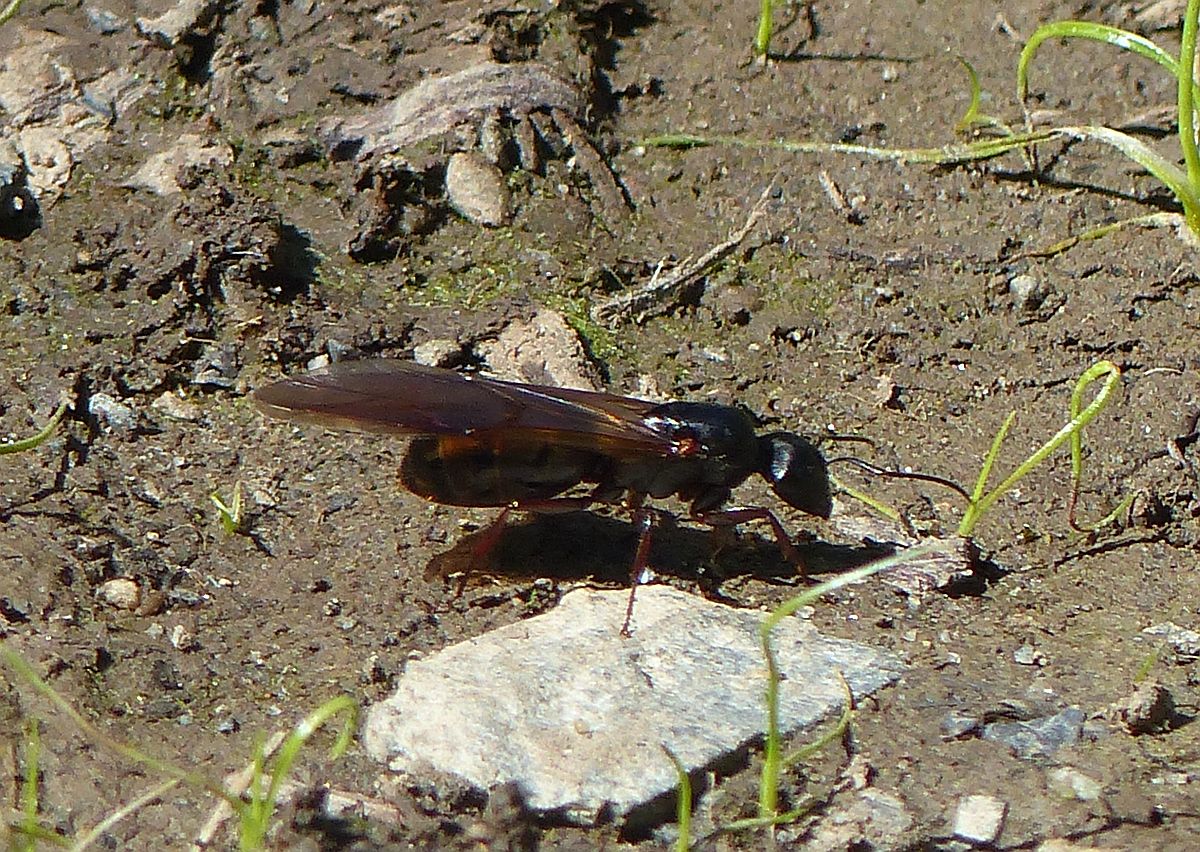

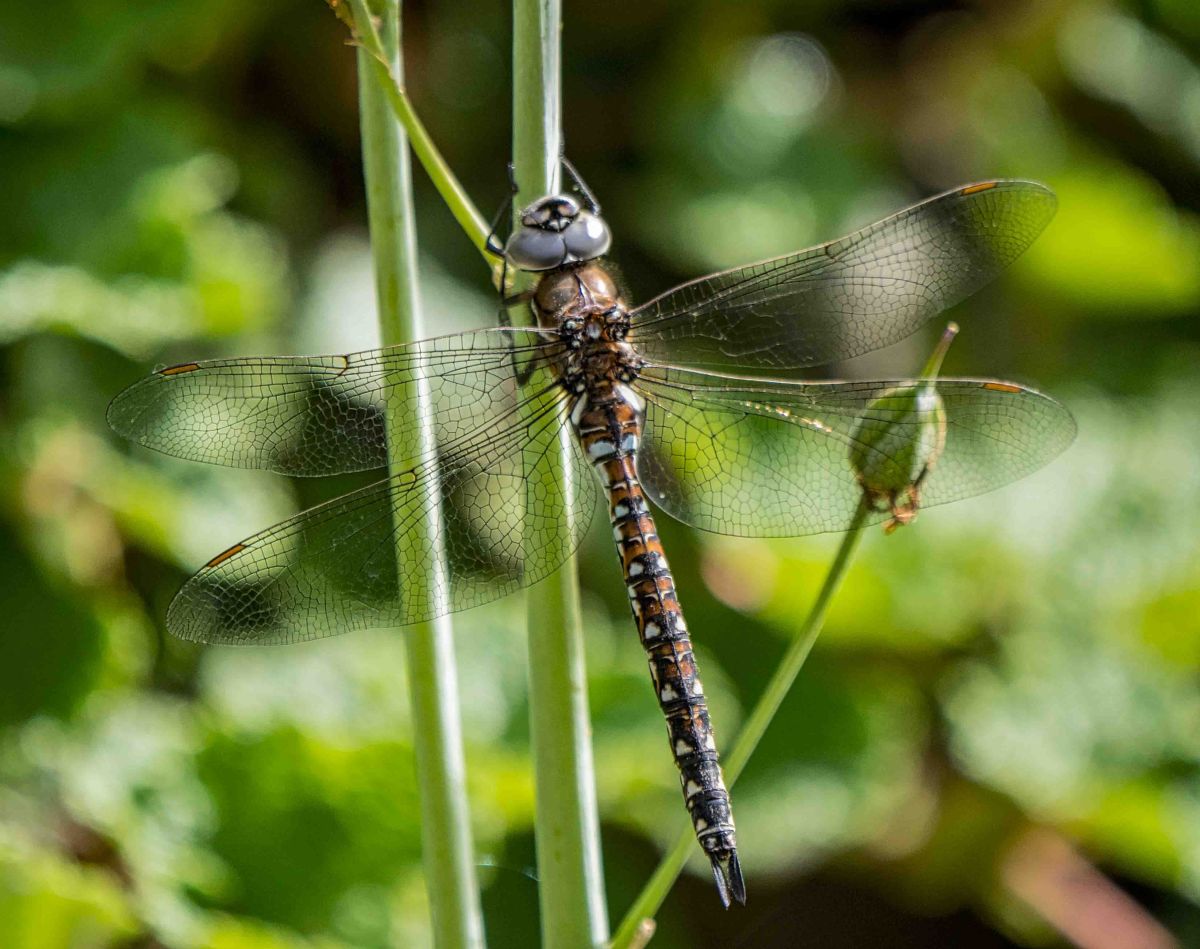
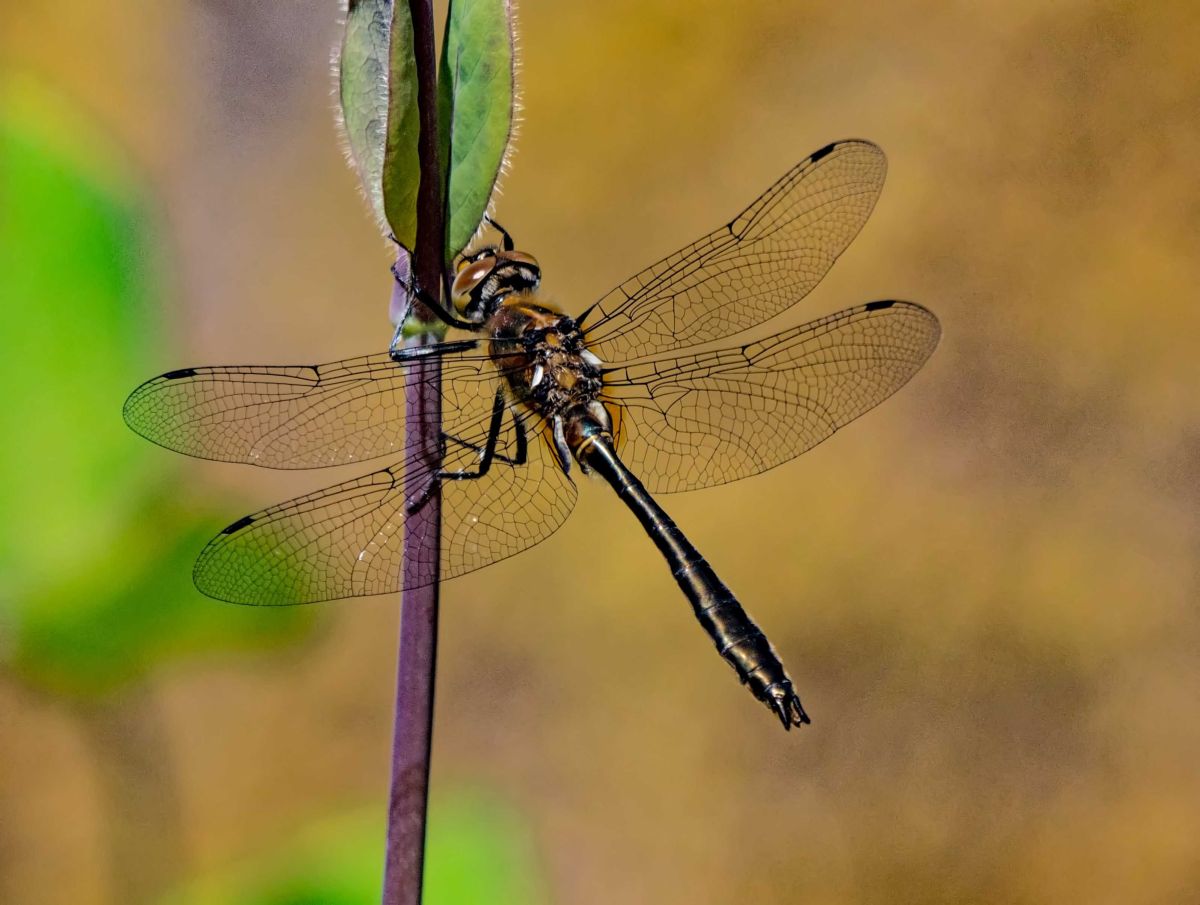
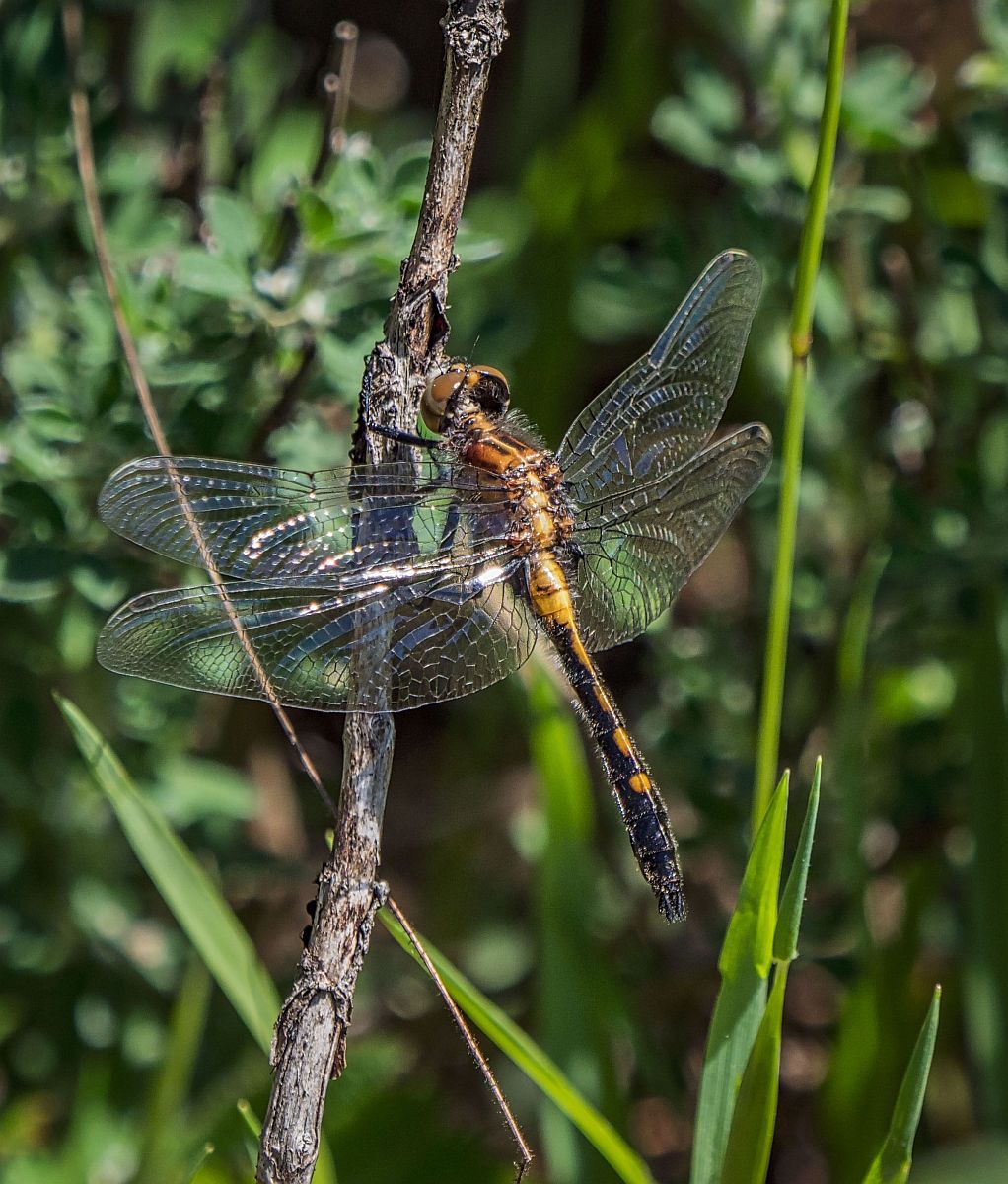
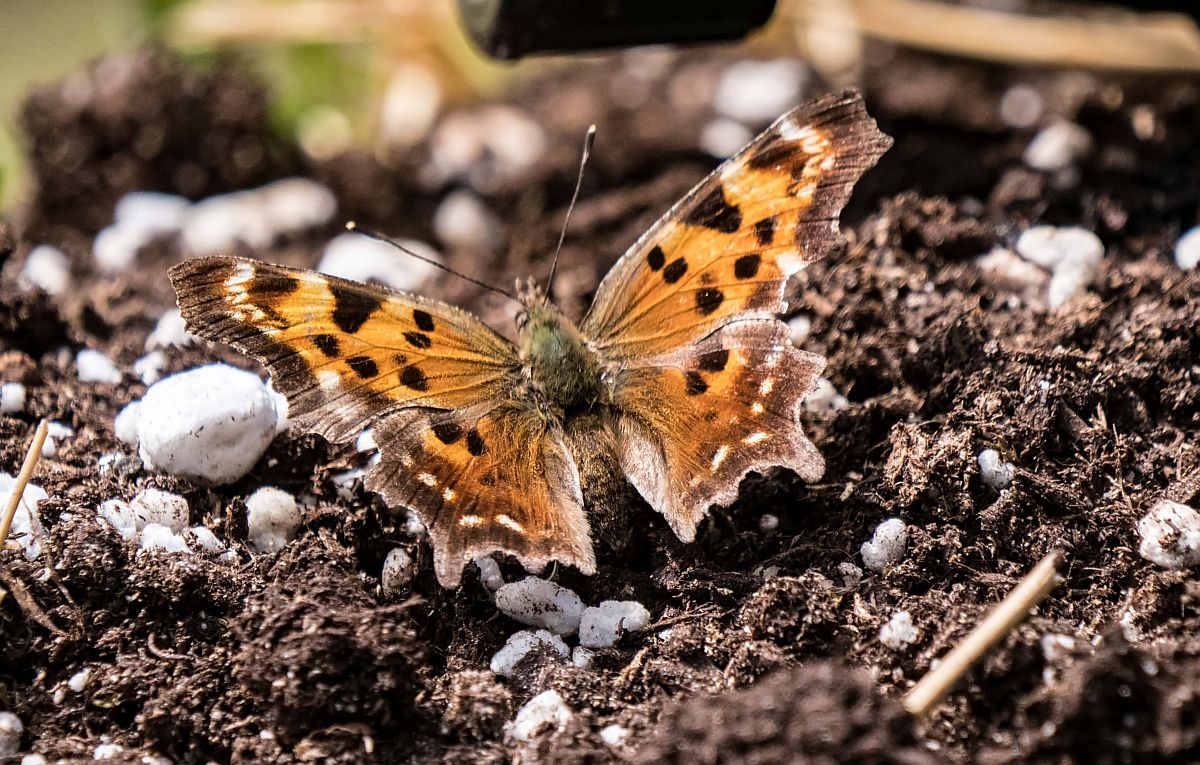
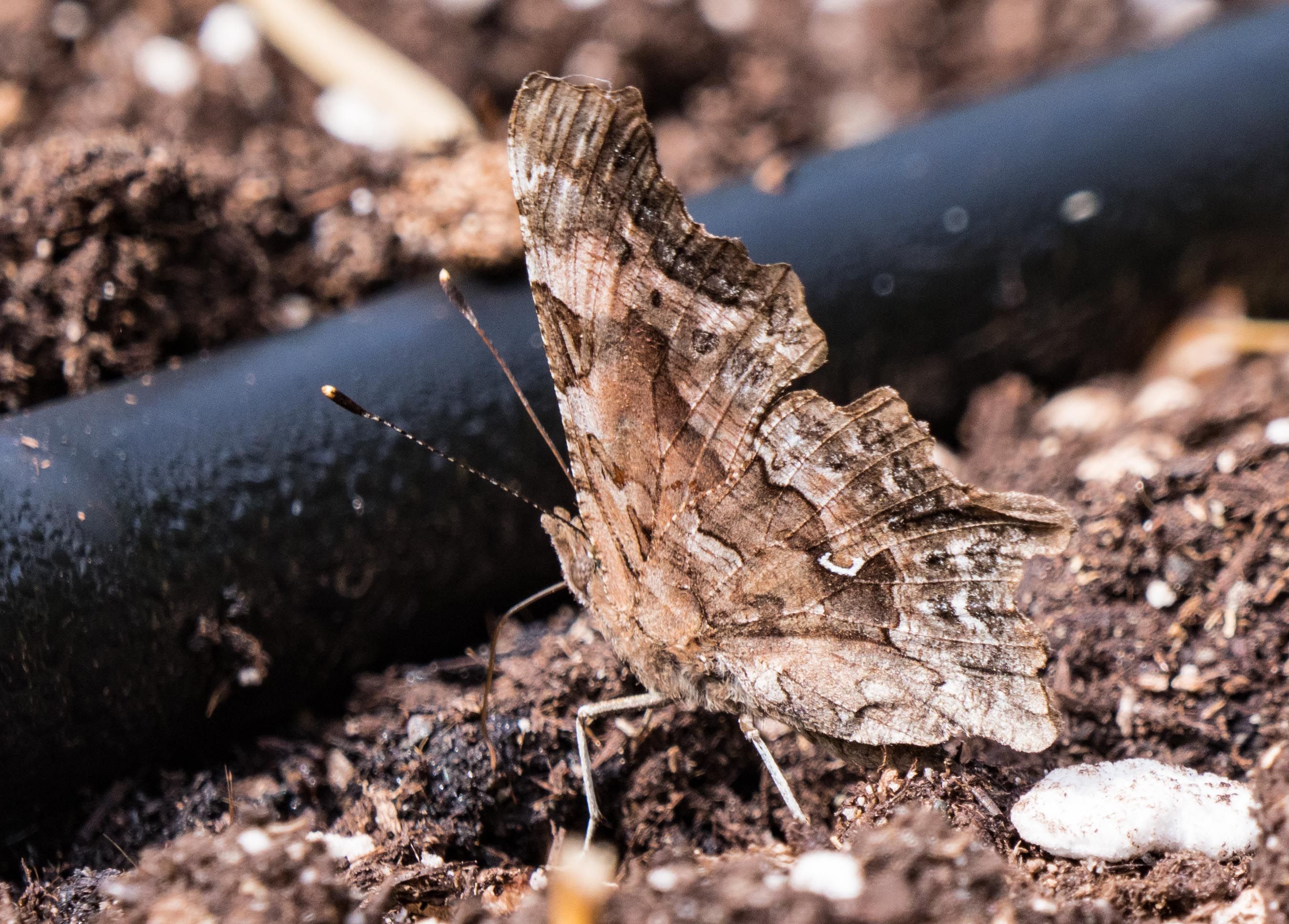
 Green Comma Polygonia faunus (Lep.: Nymphalidae) Gordon Hart
Green Comma Polygonia faunus (Lep.: Nymphalidae) Gordon Hart